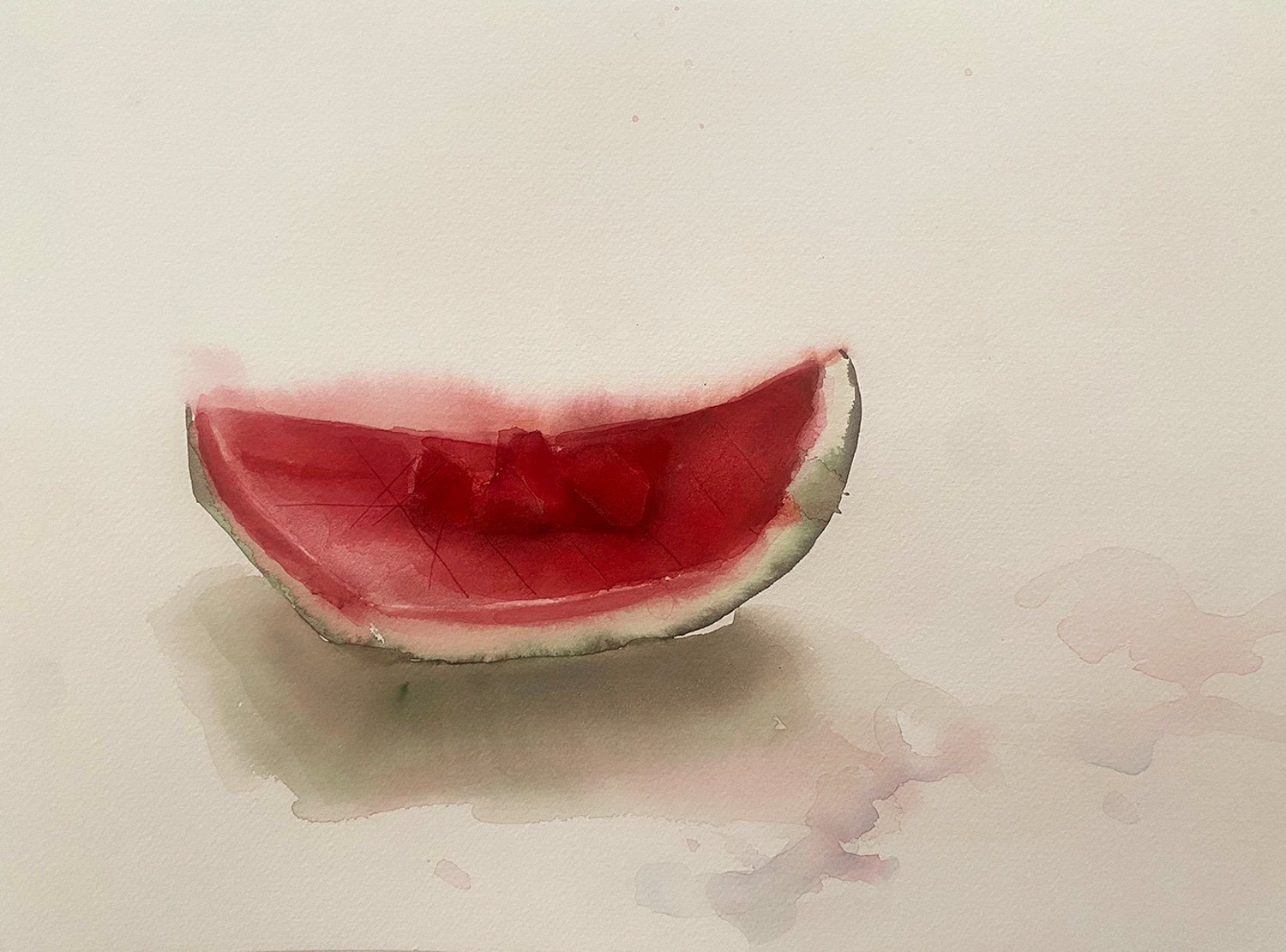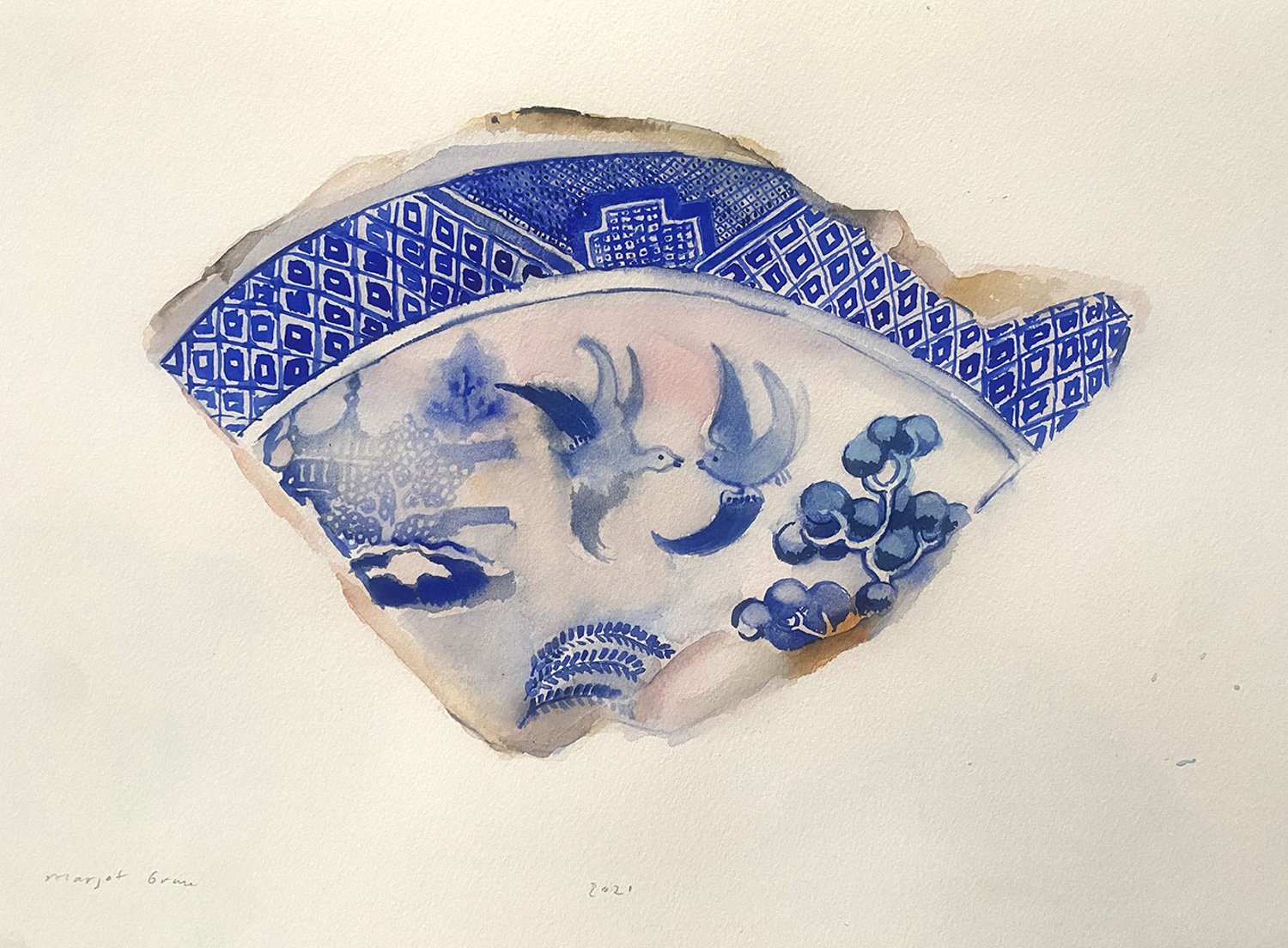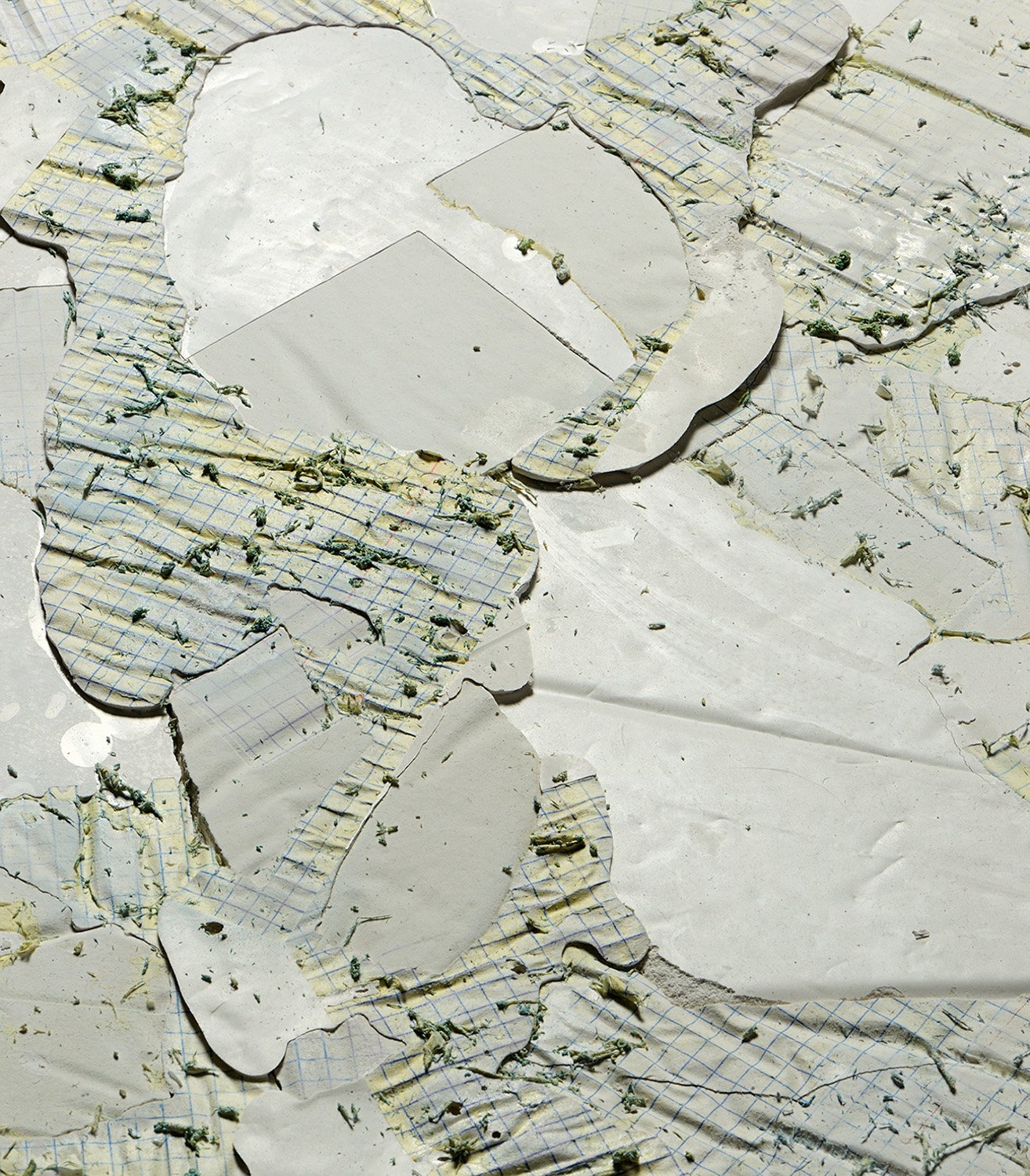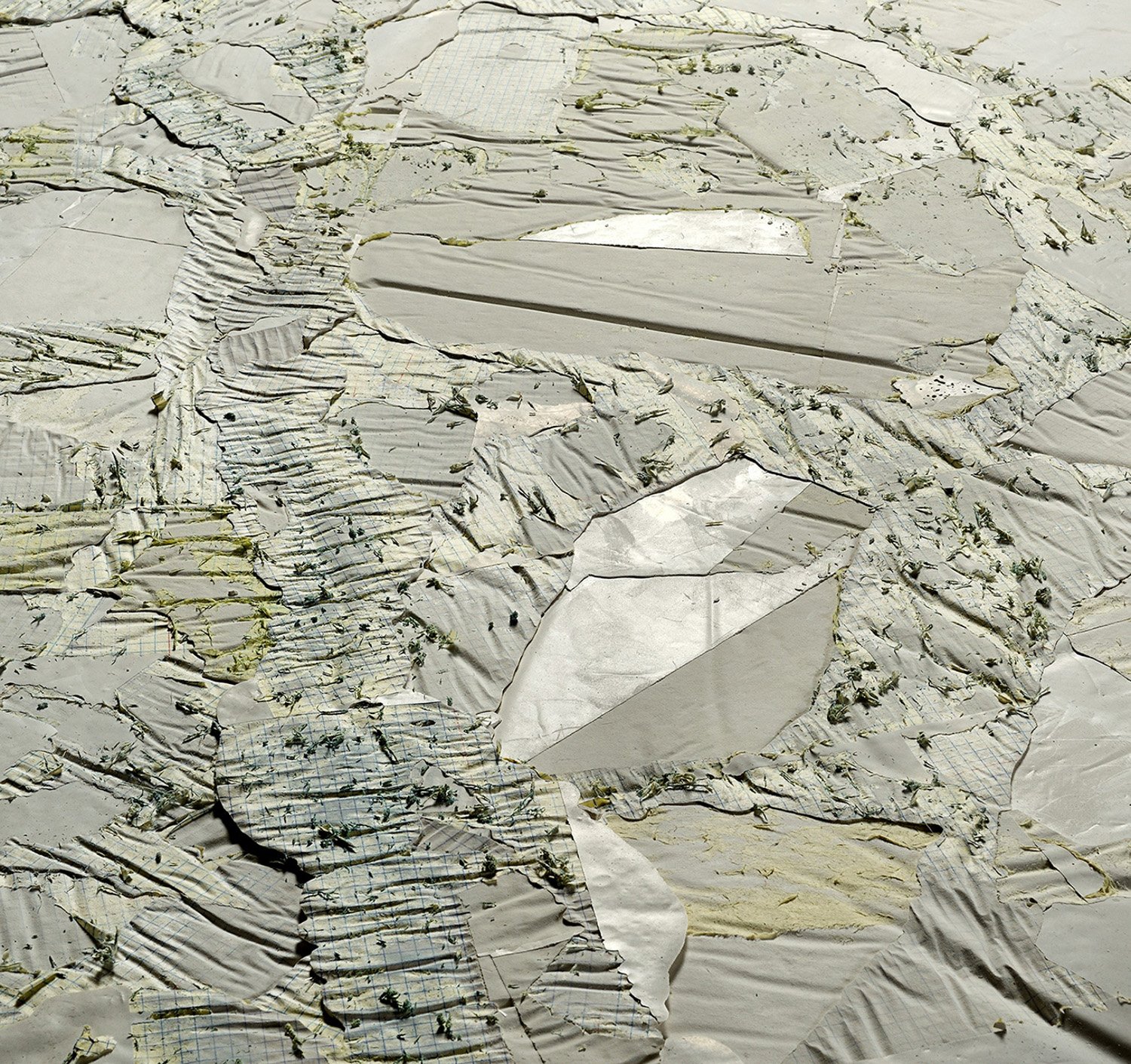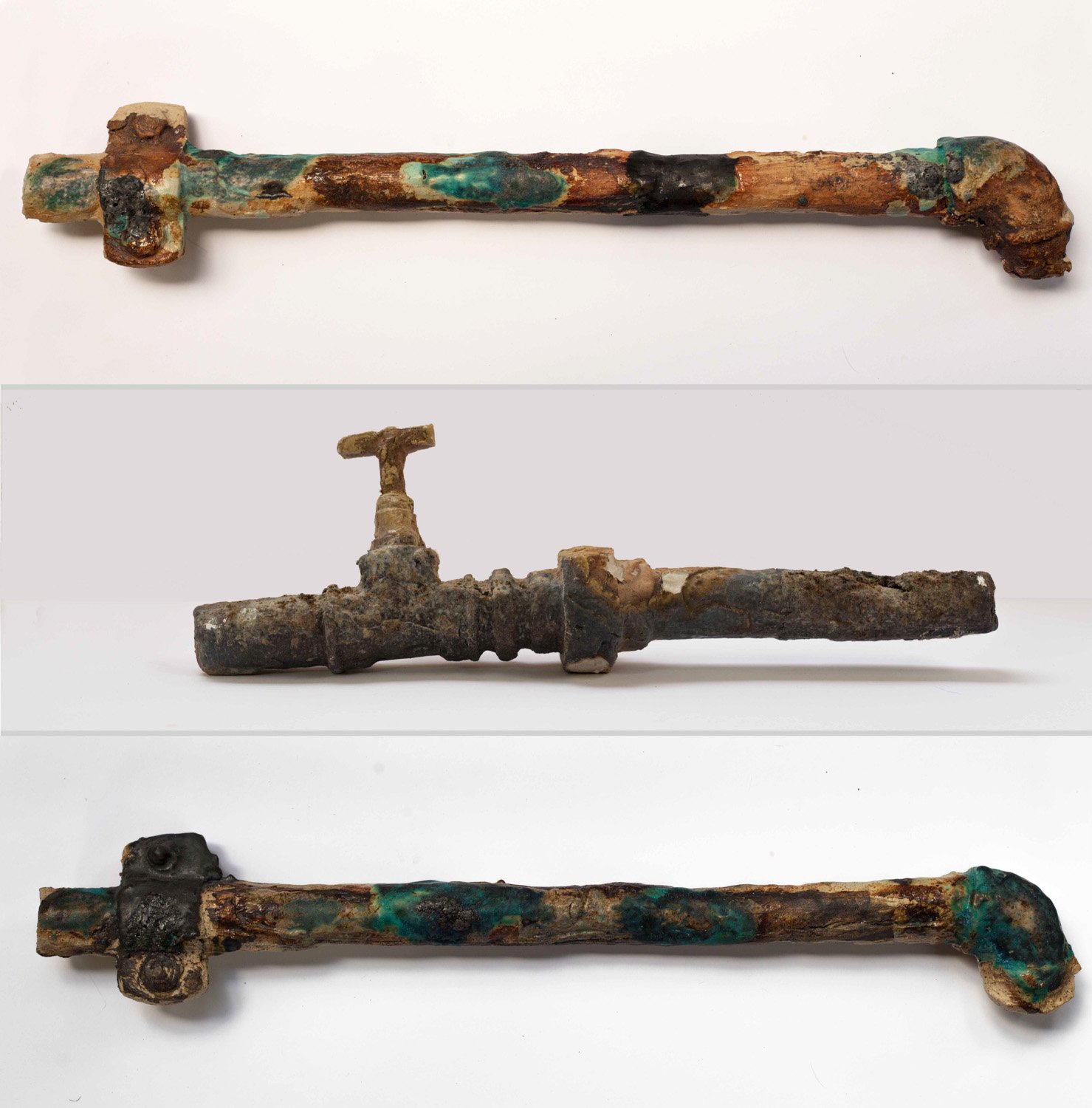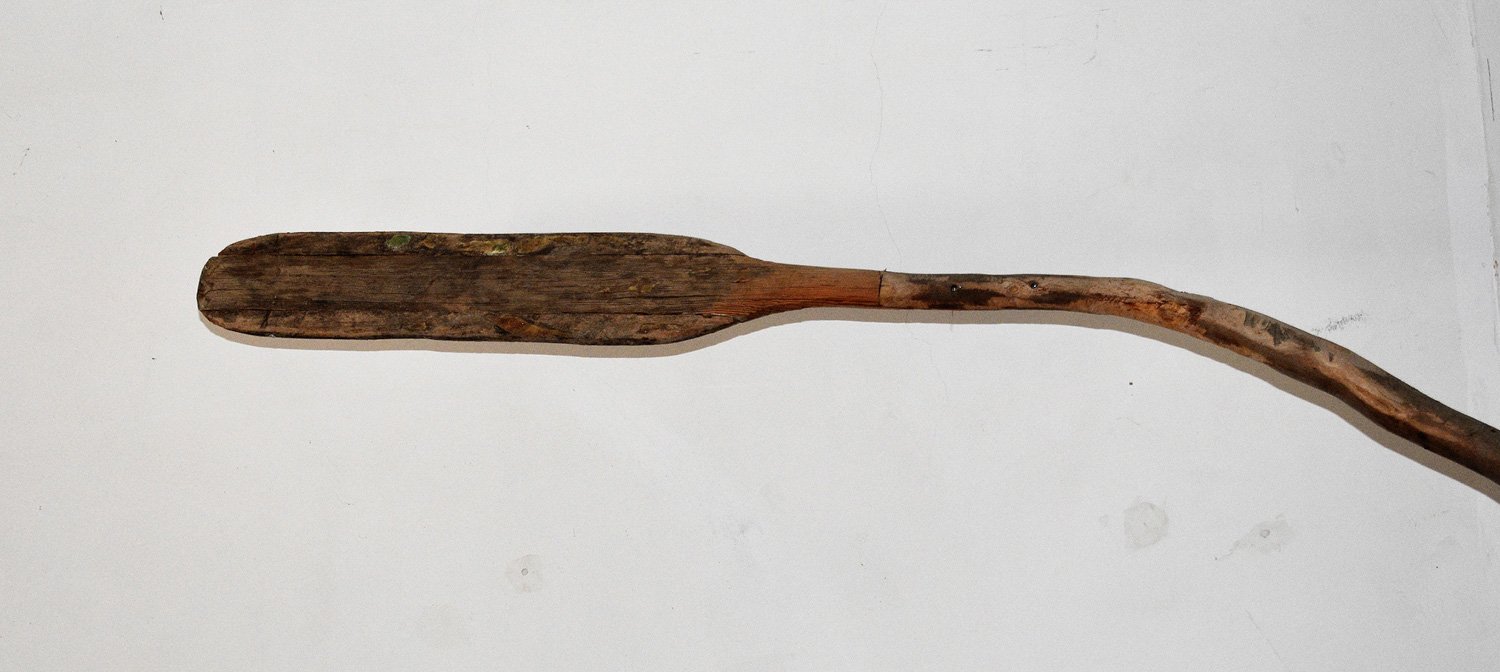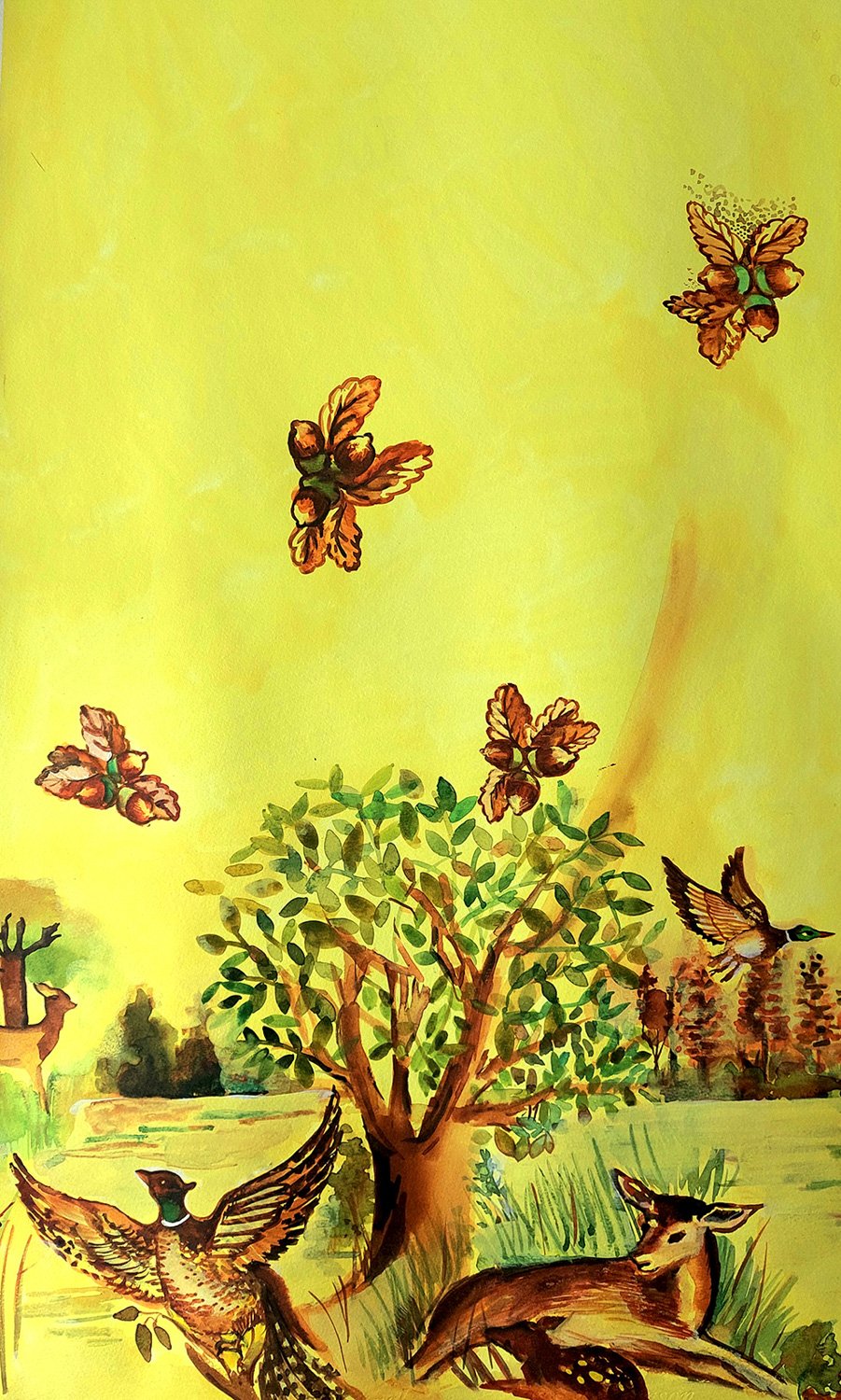ארבעה כיווני אוויר
ארבעה כיווני אוויר
בלהה אהרוני / מרגו גראן / ינאי קלנר / עמיר רוזנברג
אוצרת: רותי חינסקי אמיתי
07.05.22 - 25.03.22


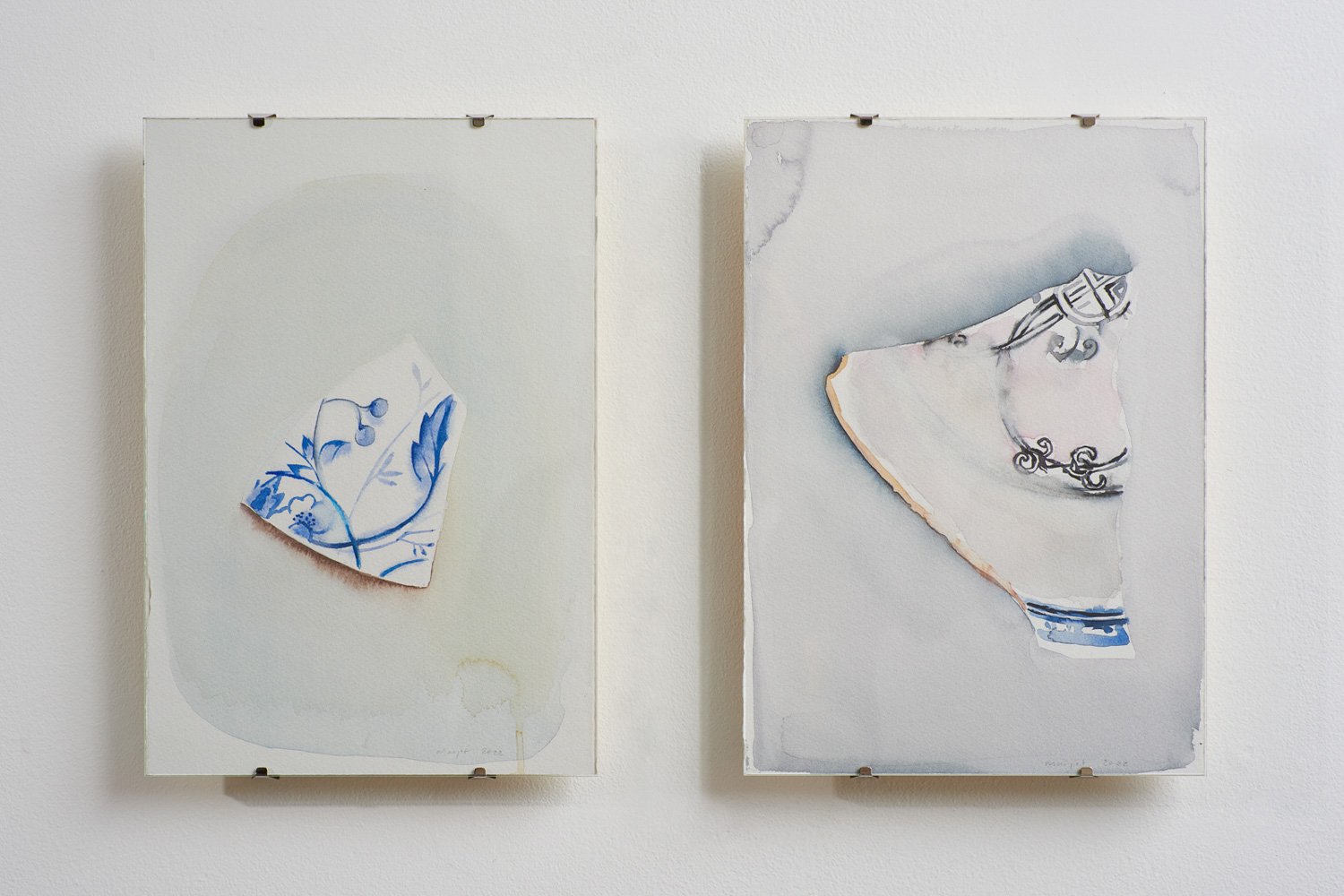
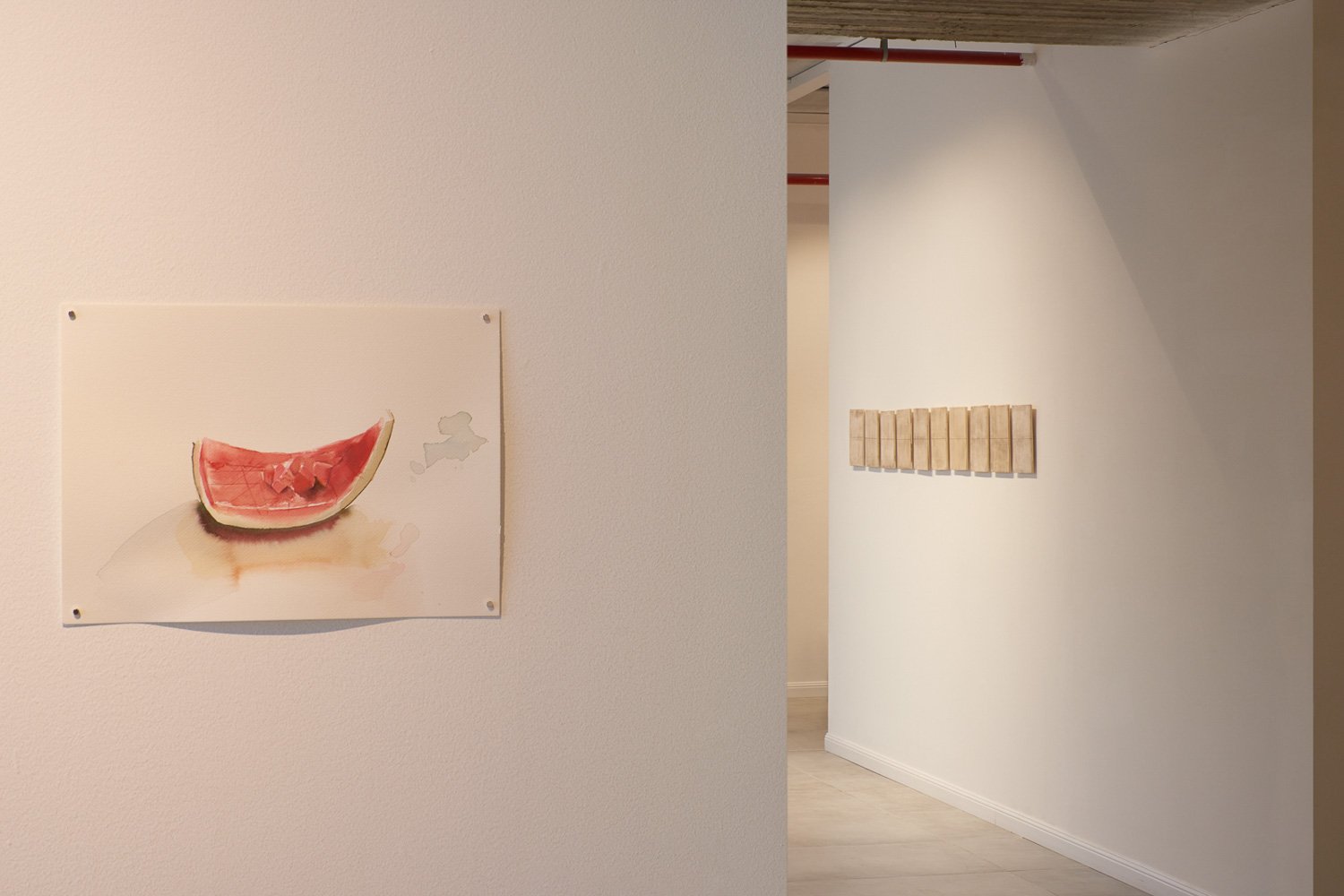
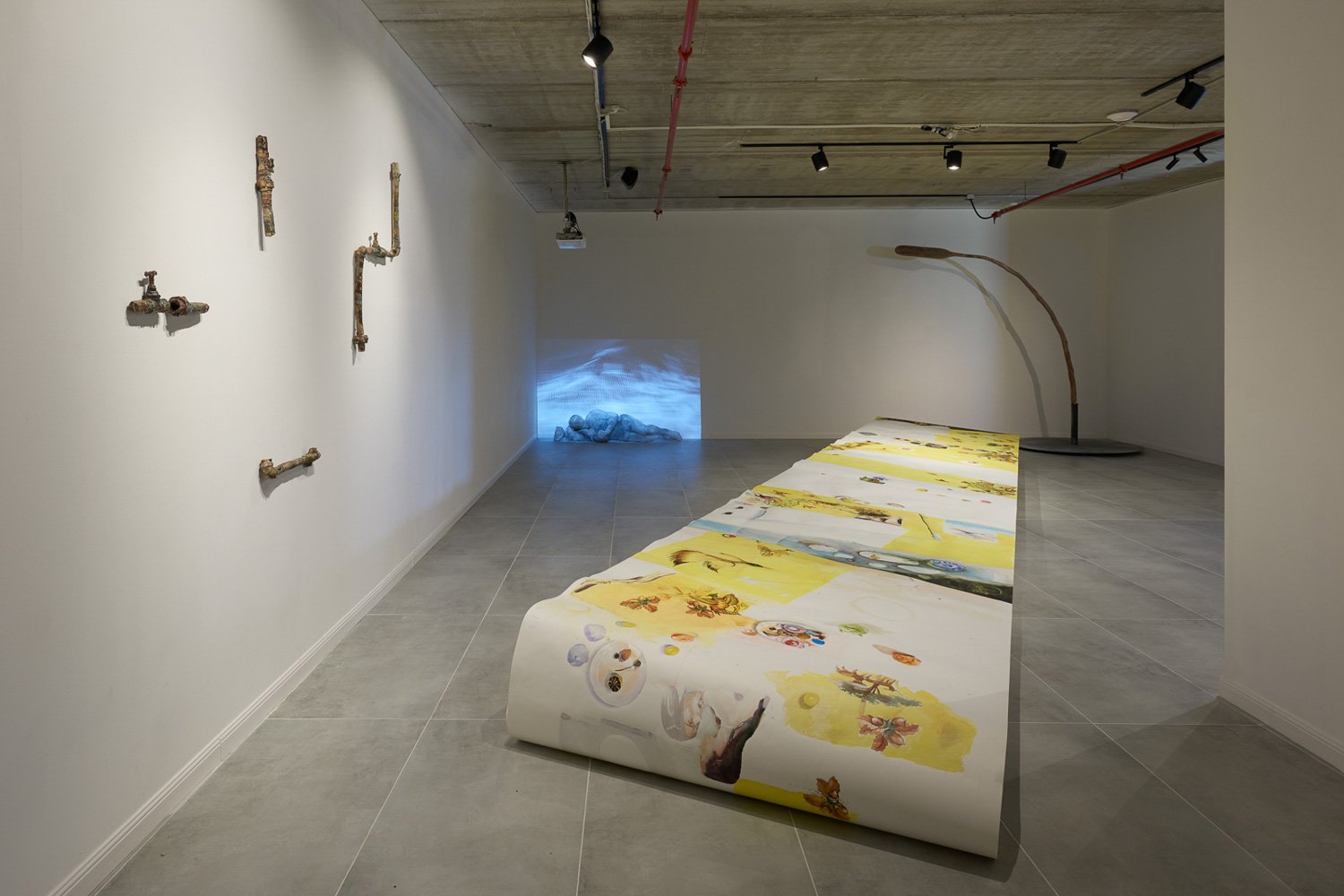
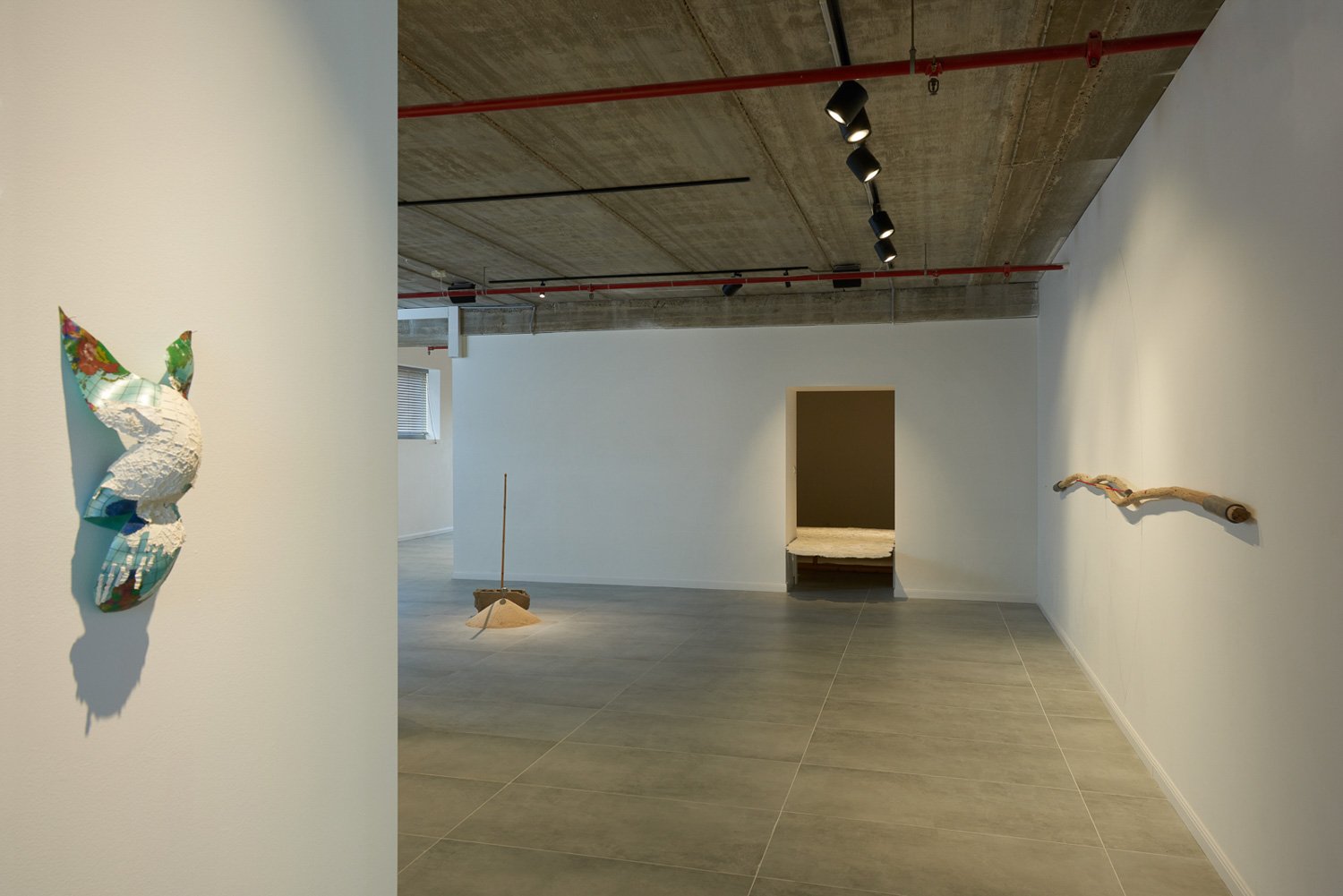
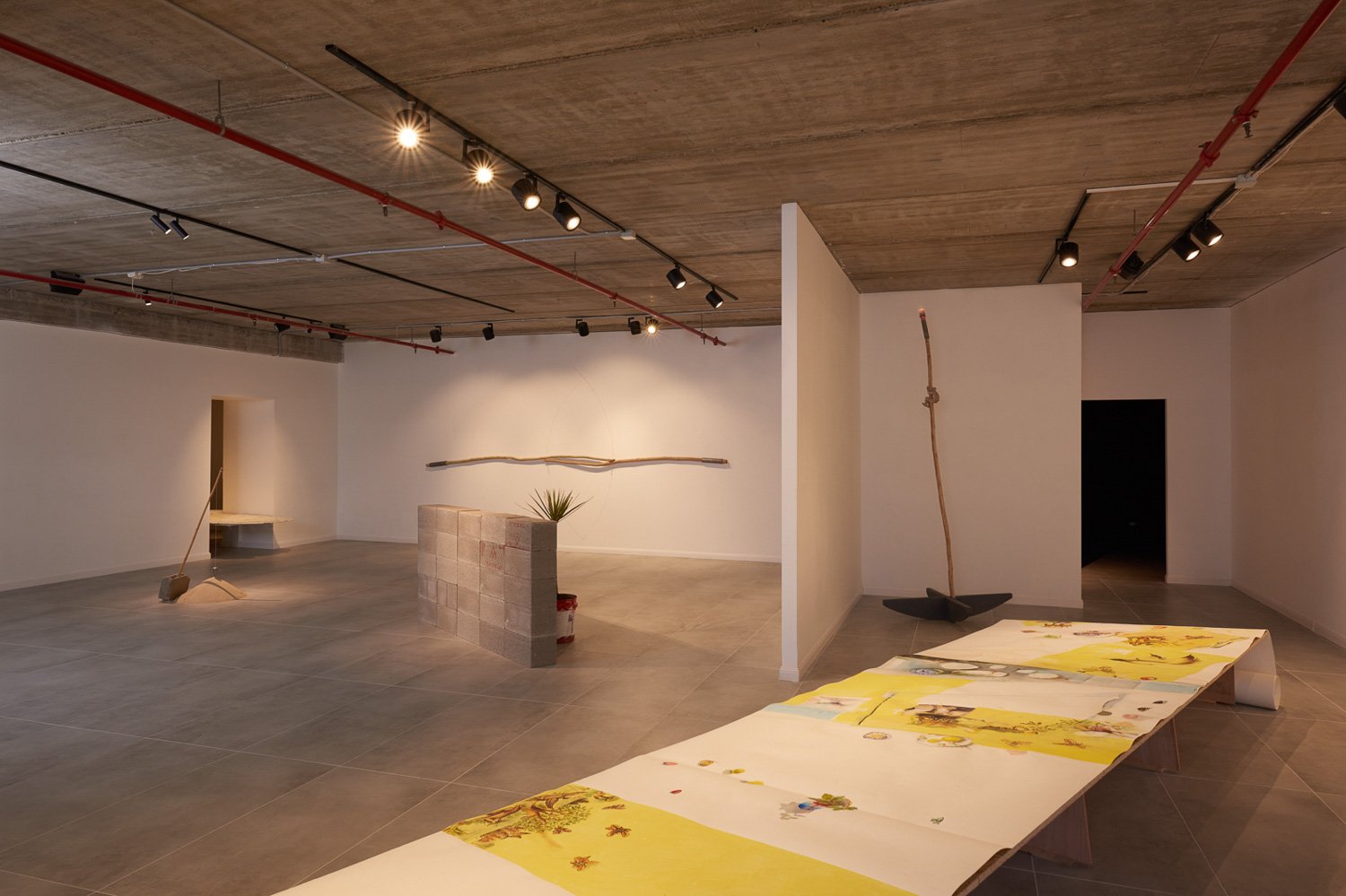
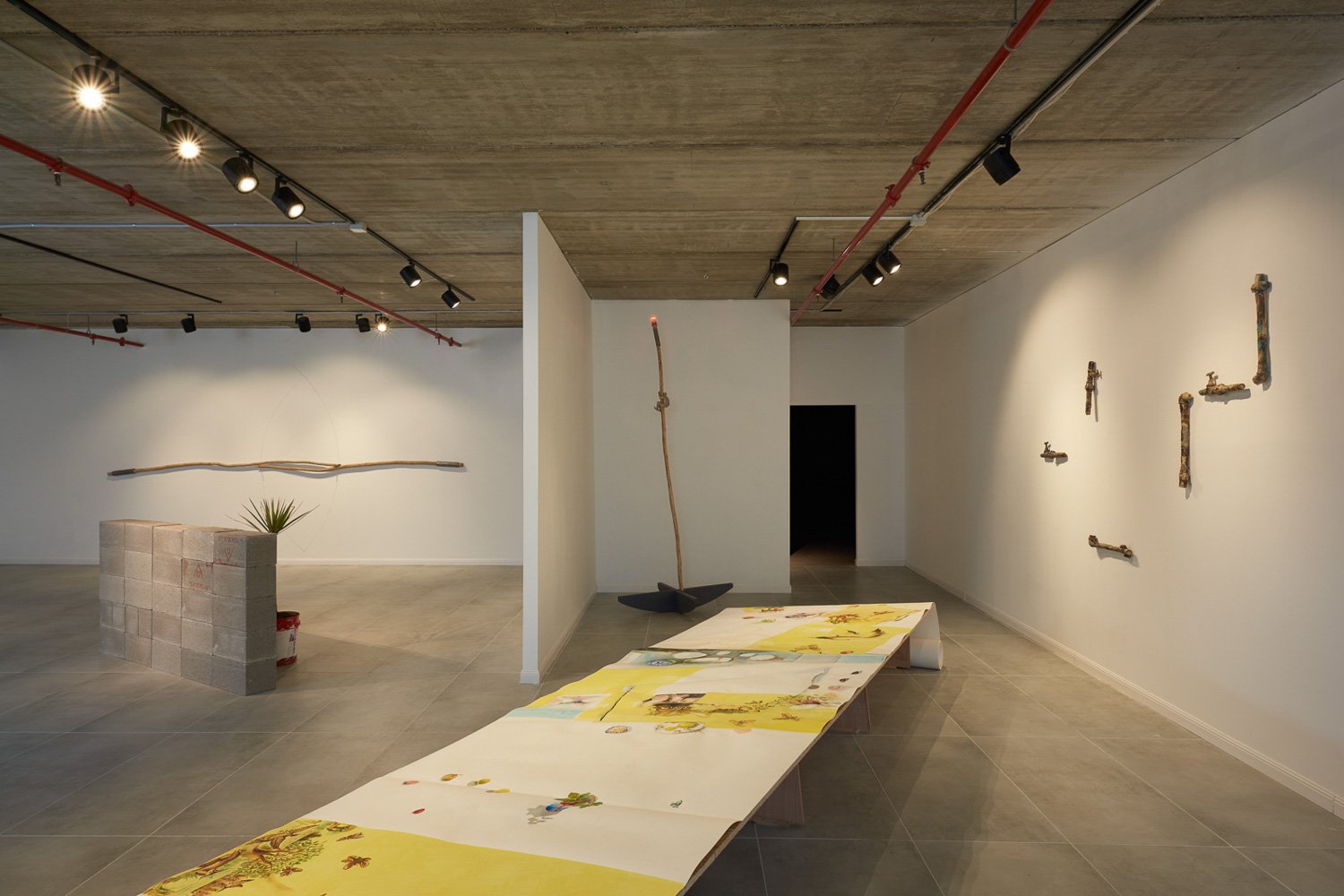
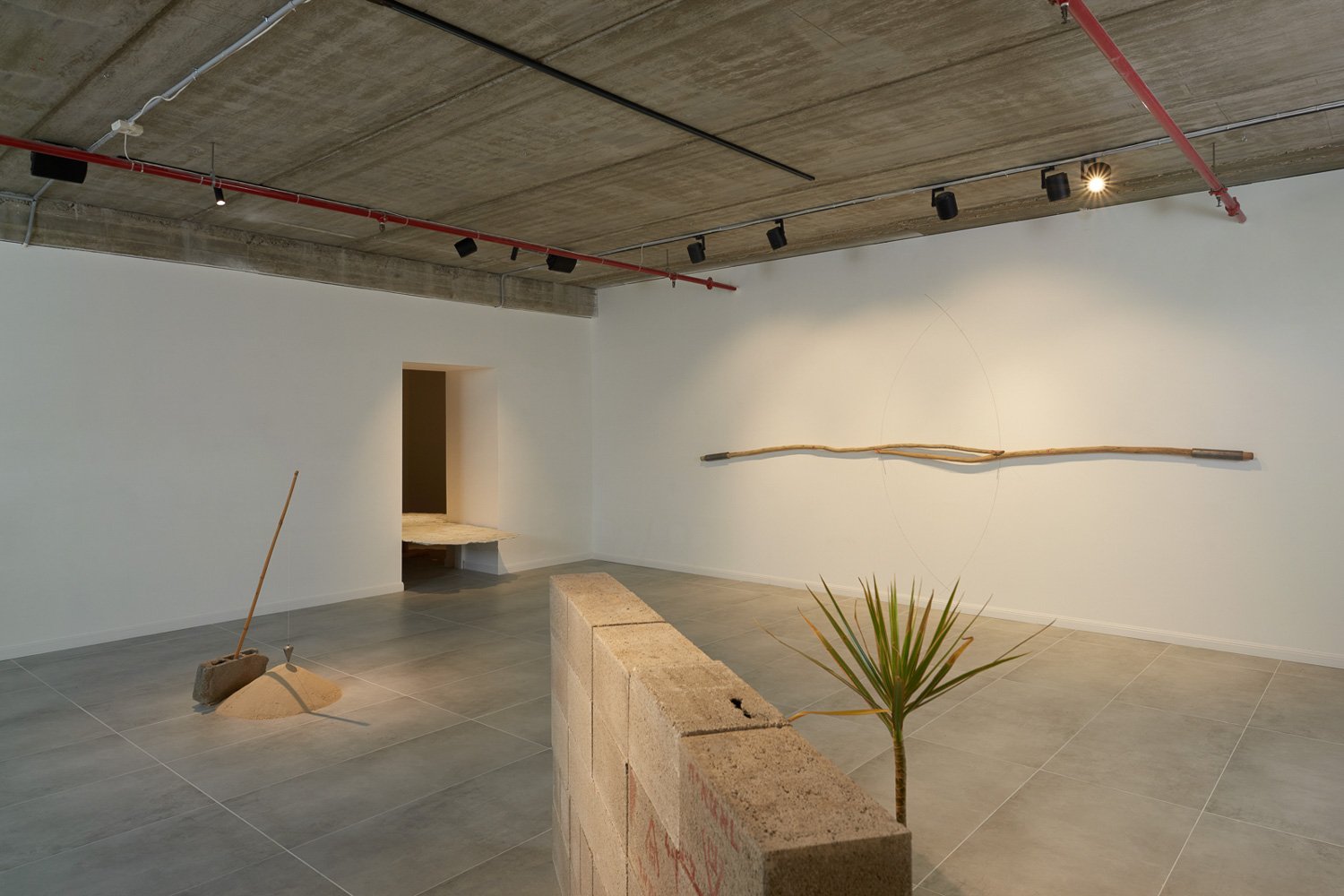
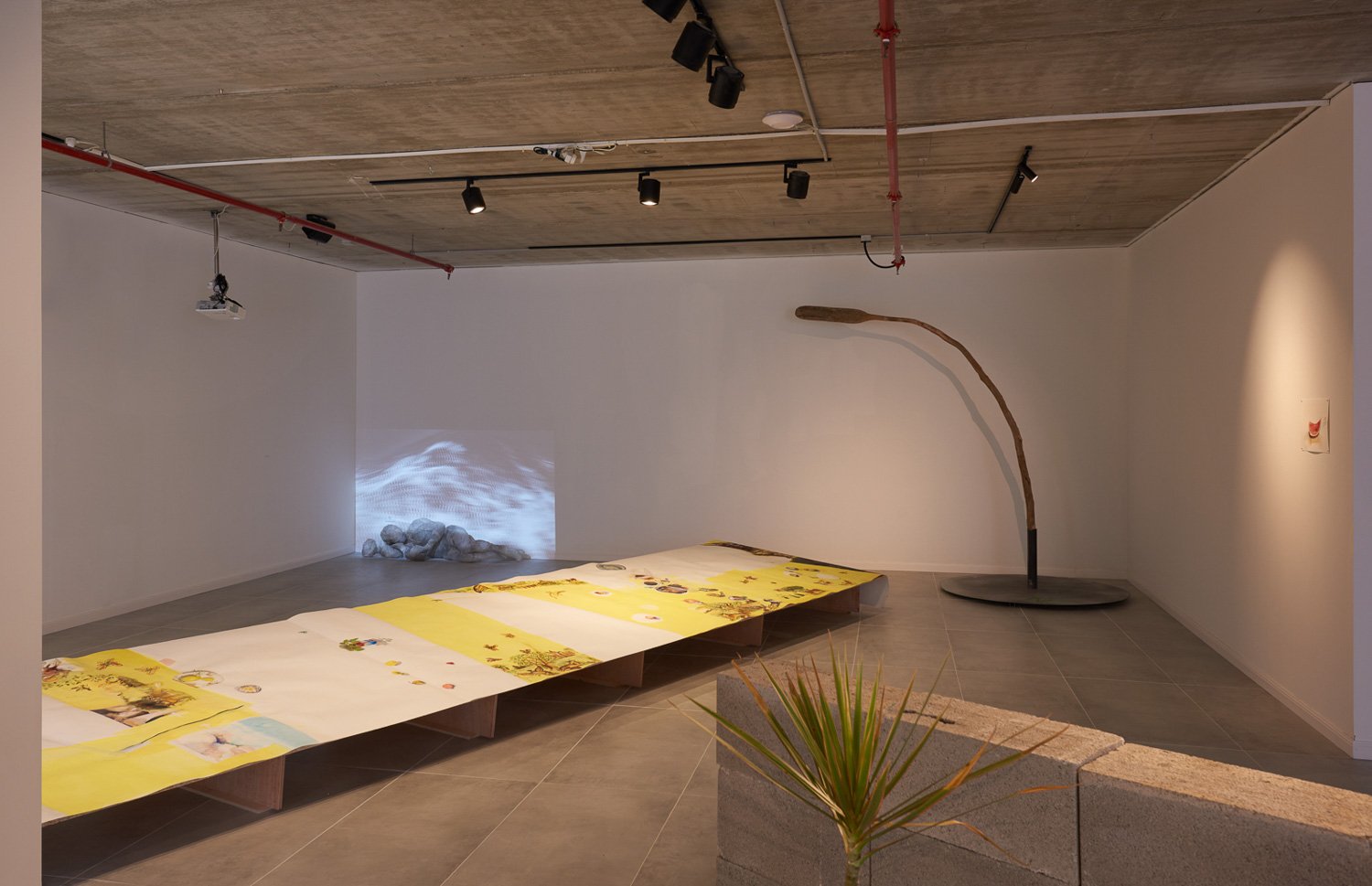
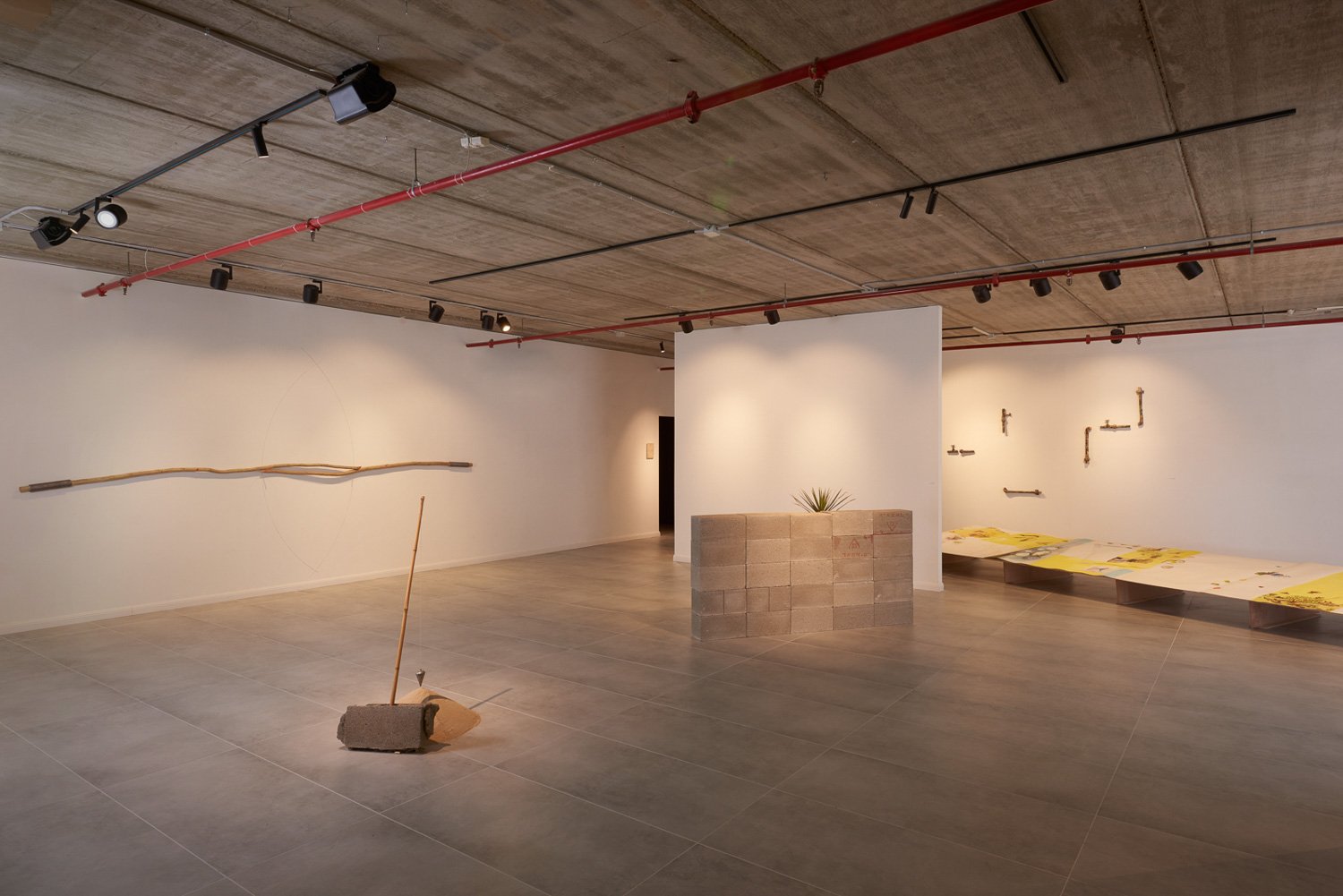
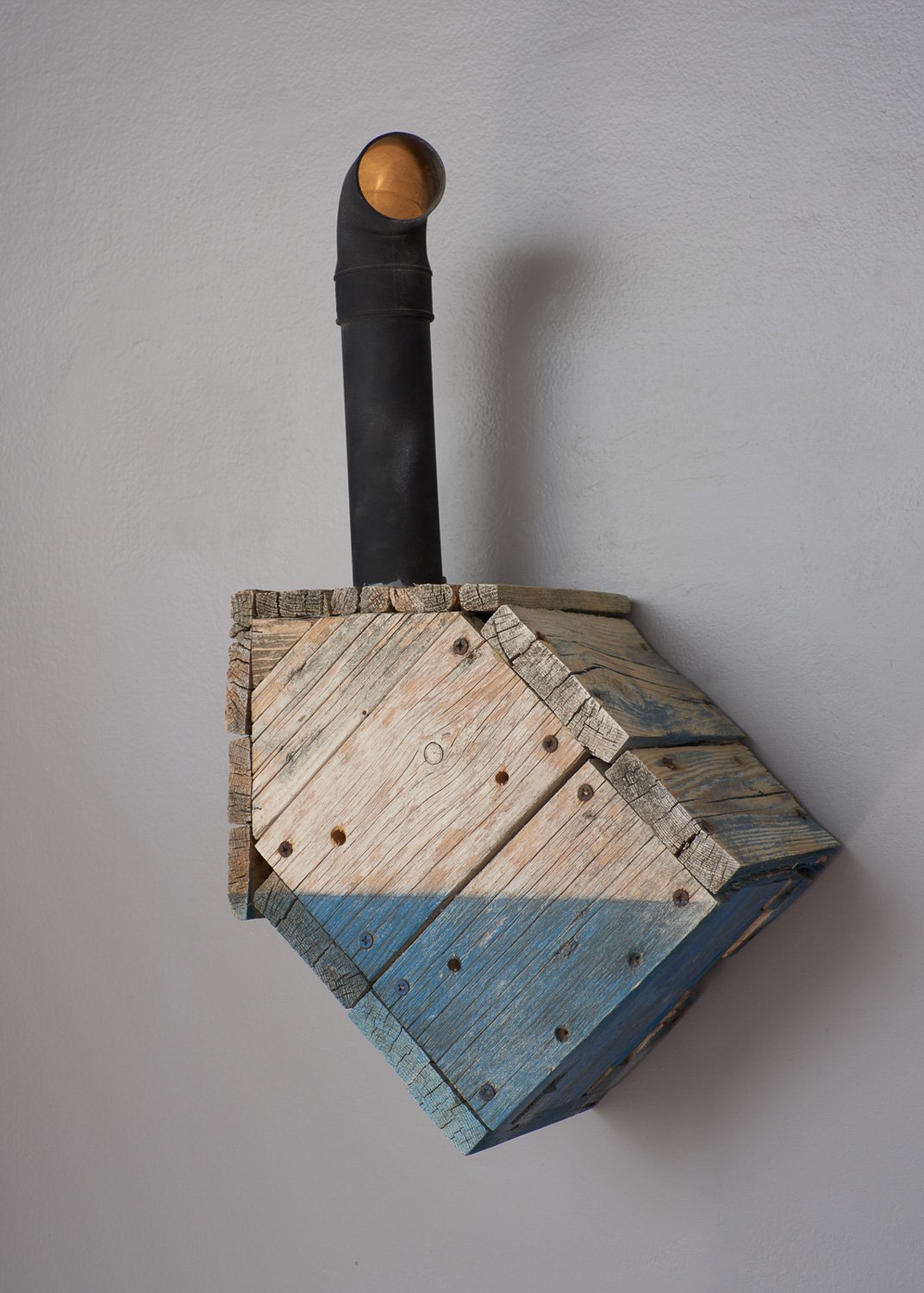
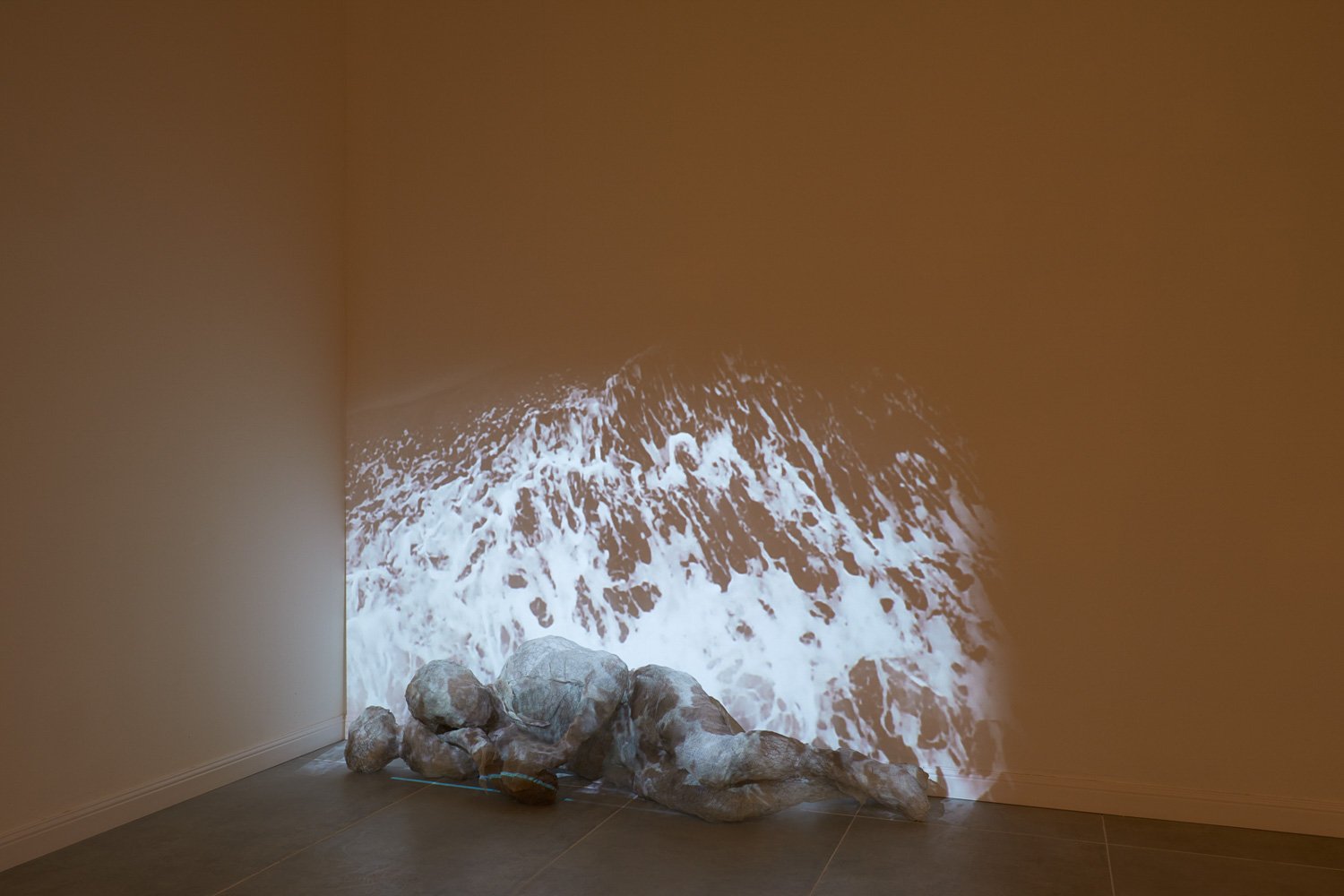
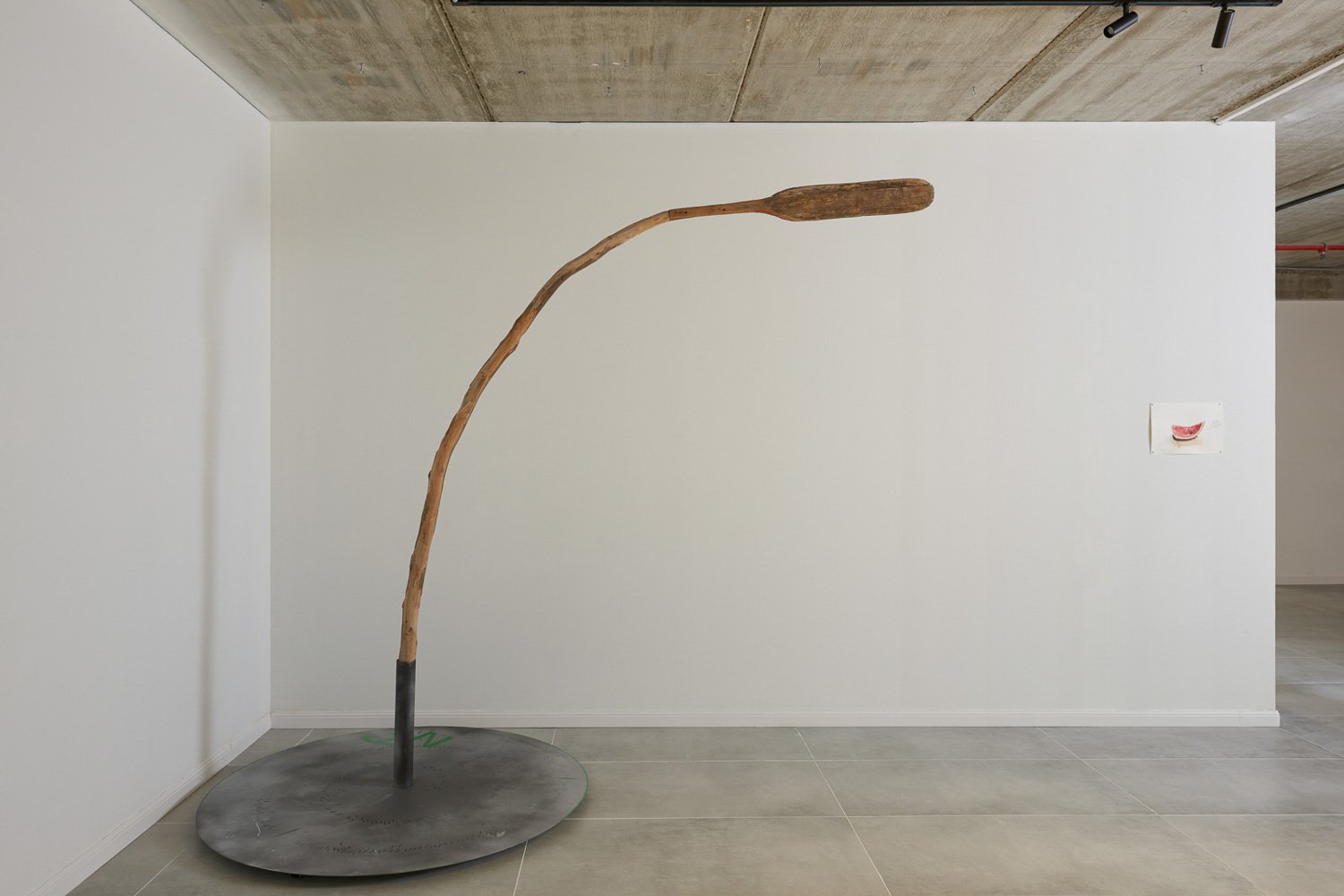
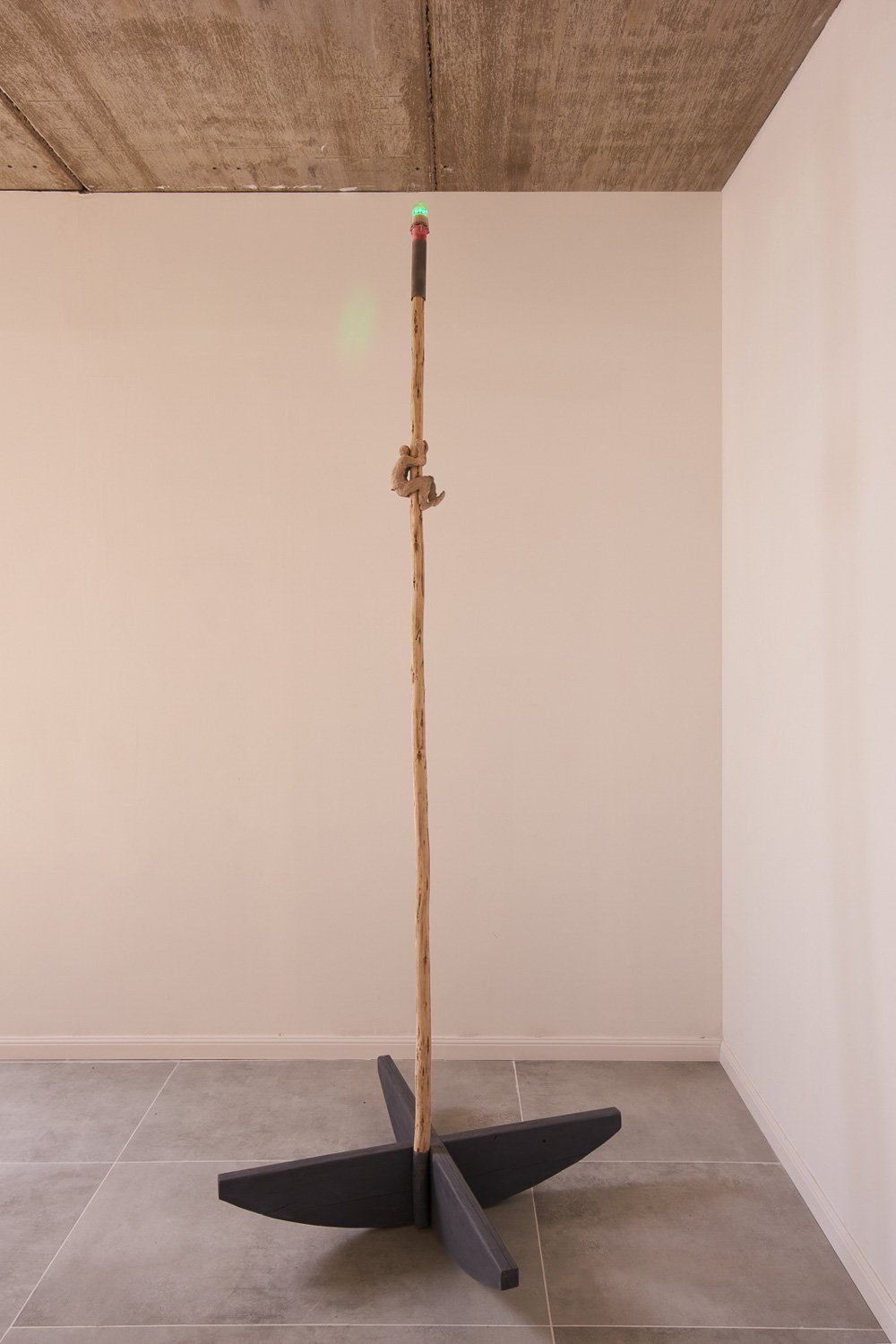

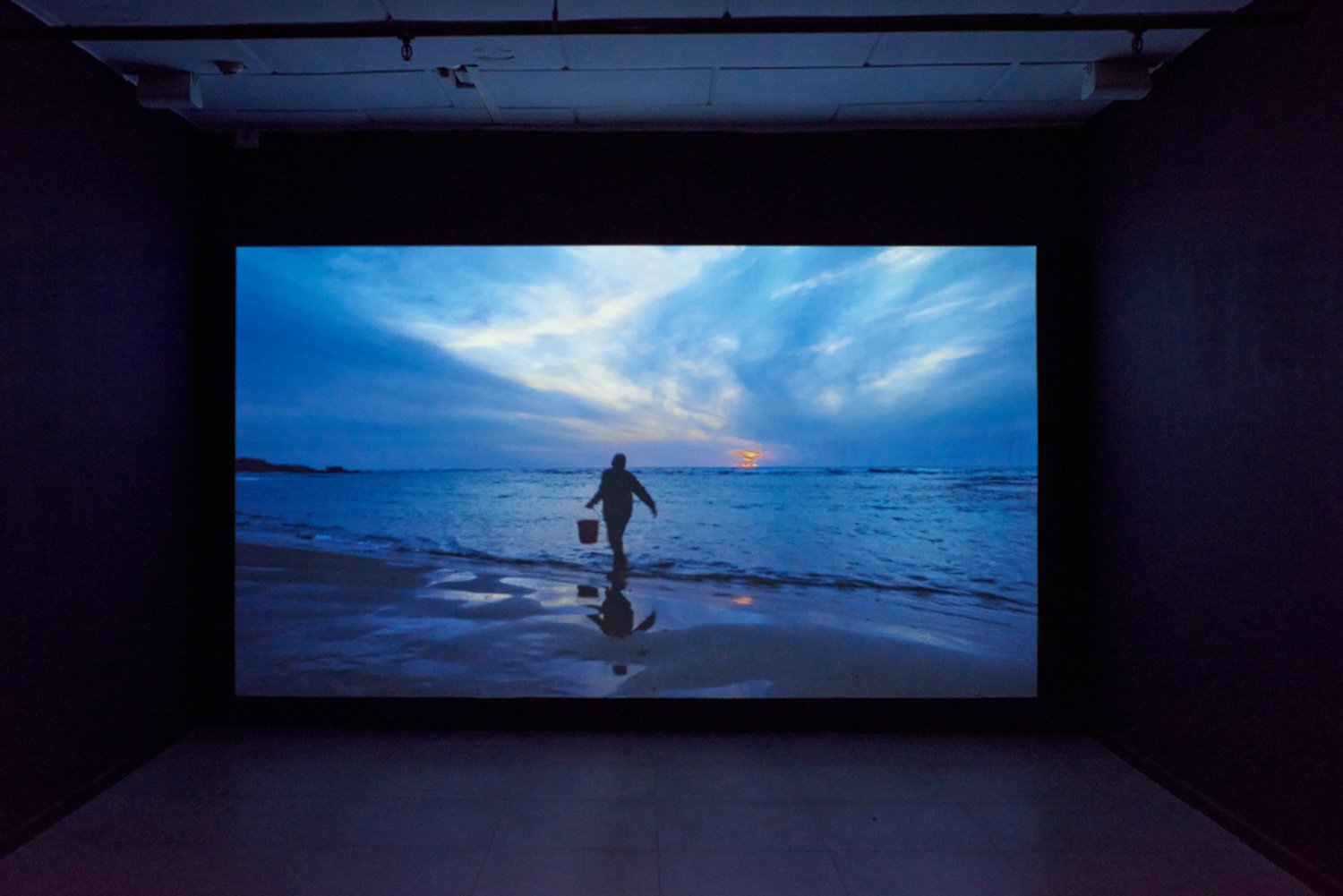
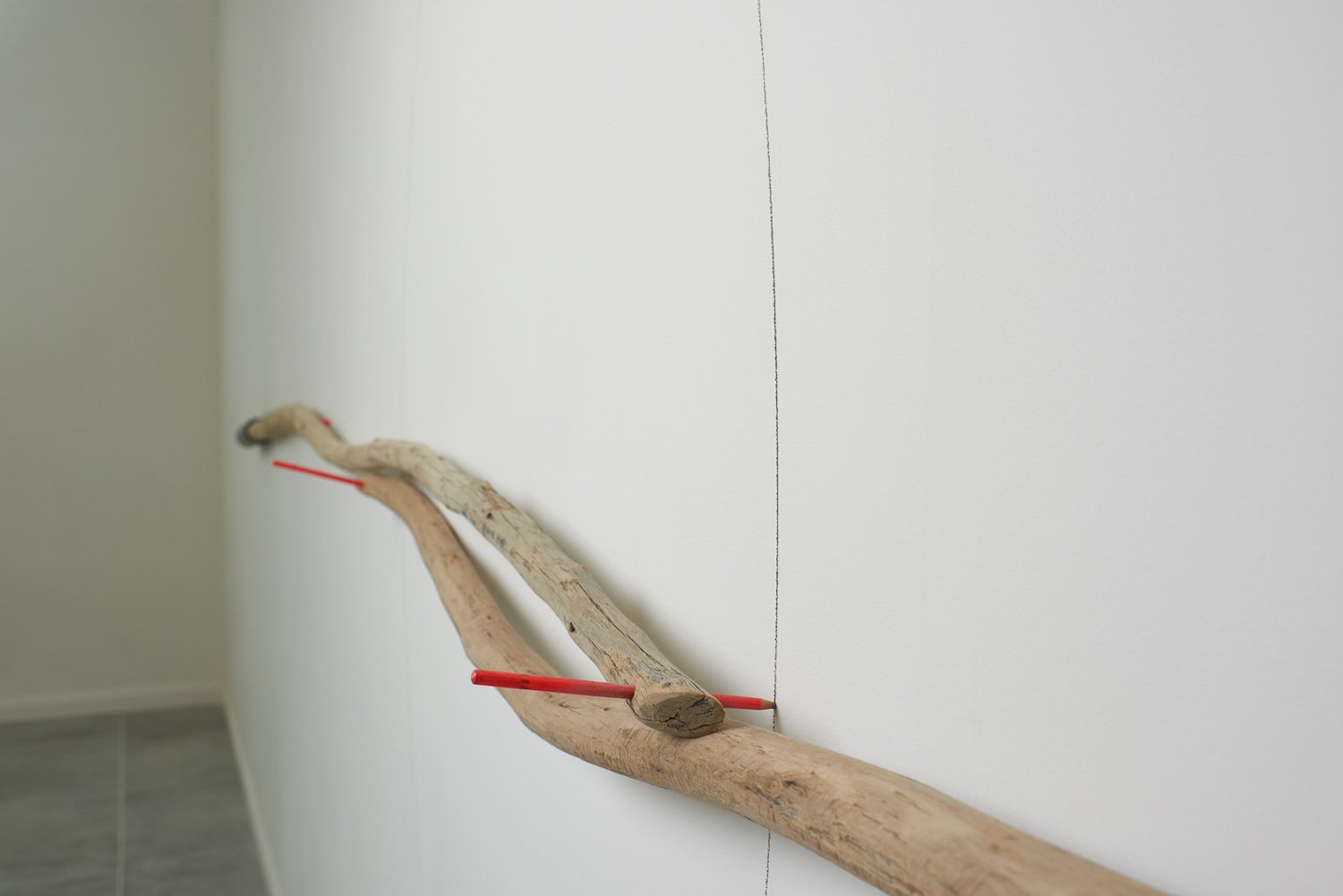
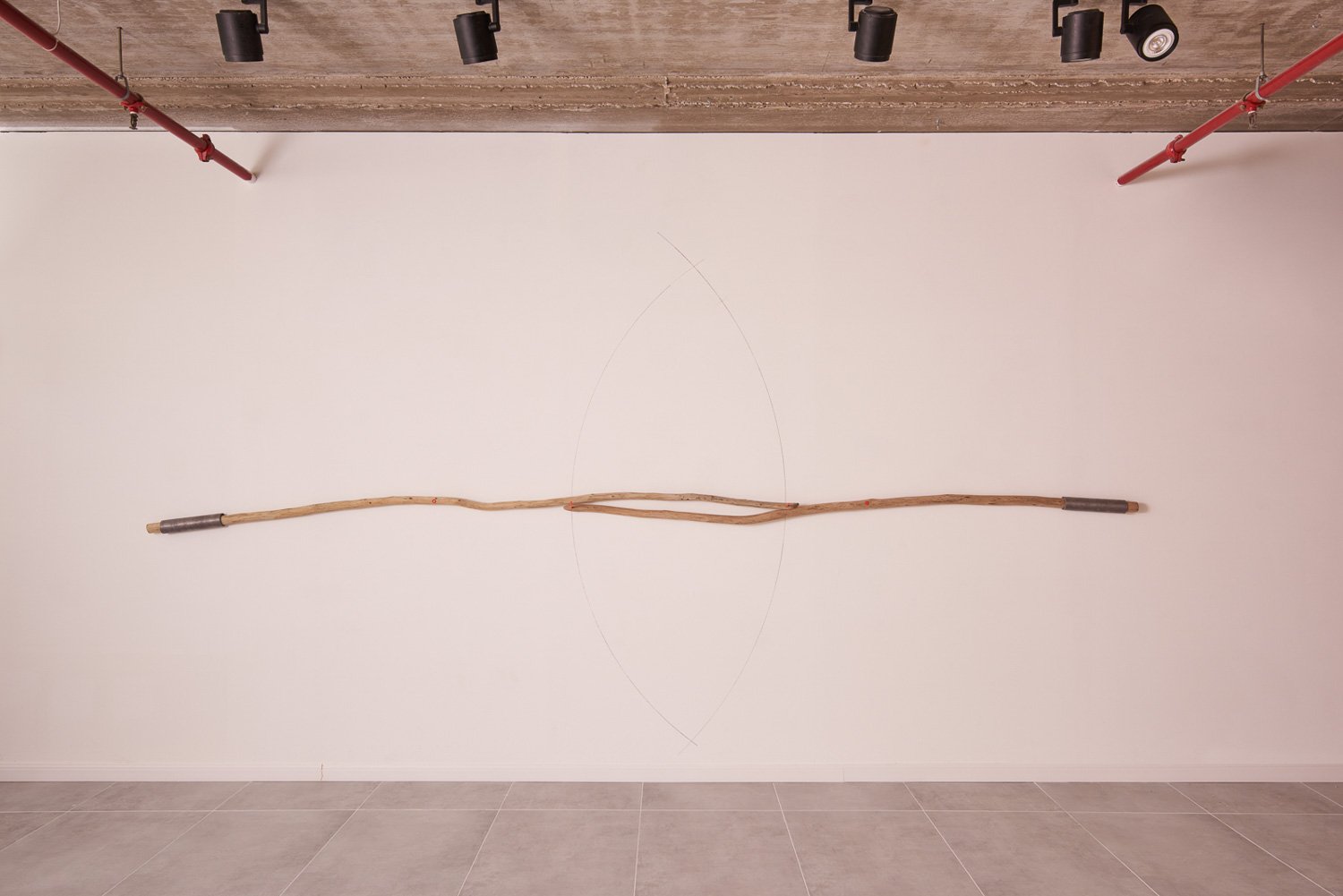
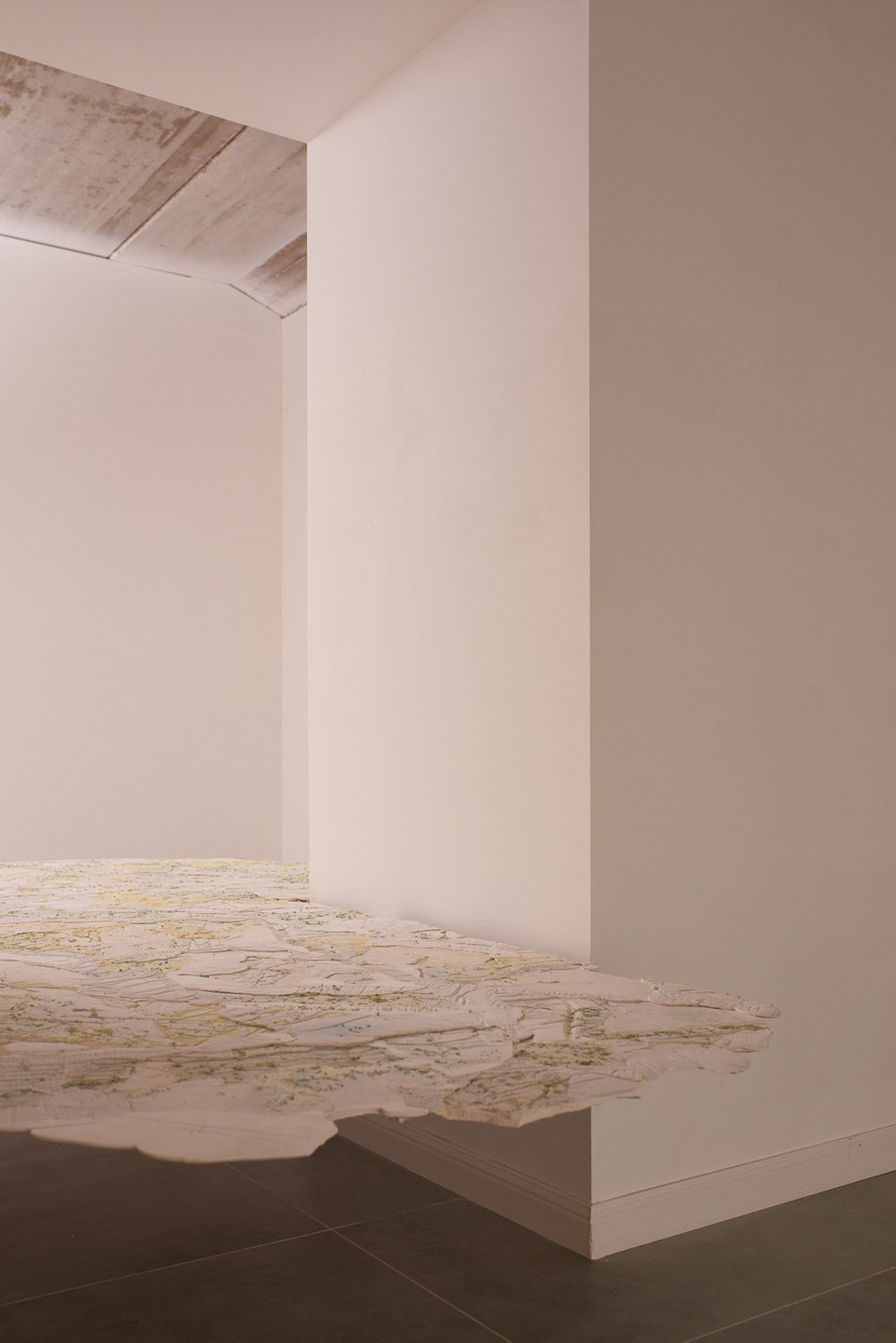
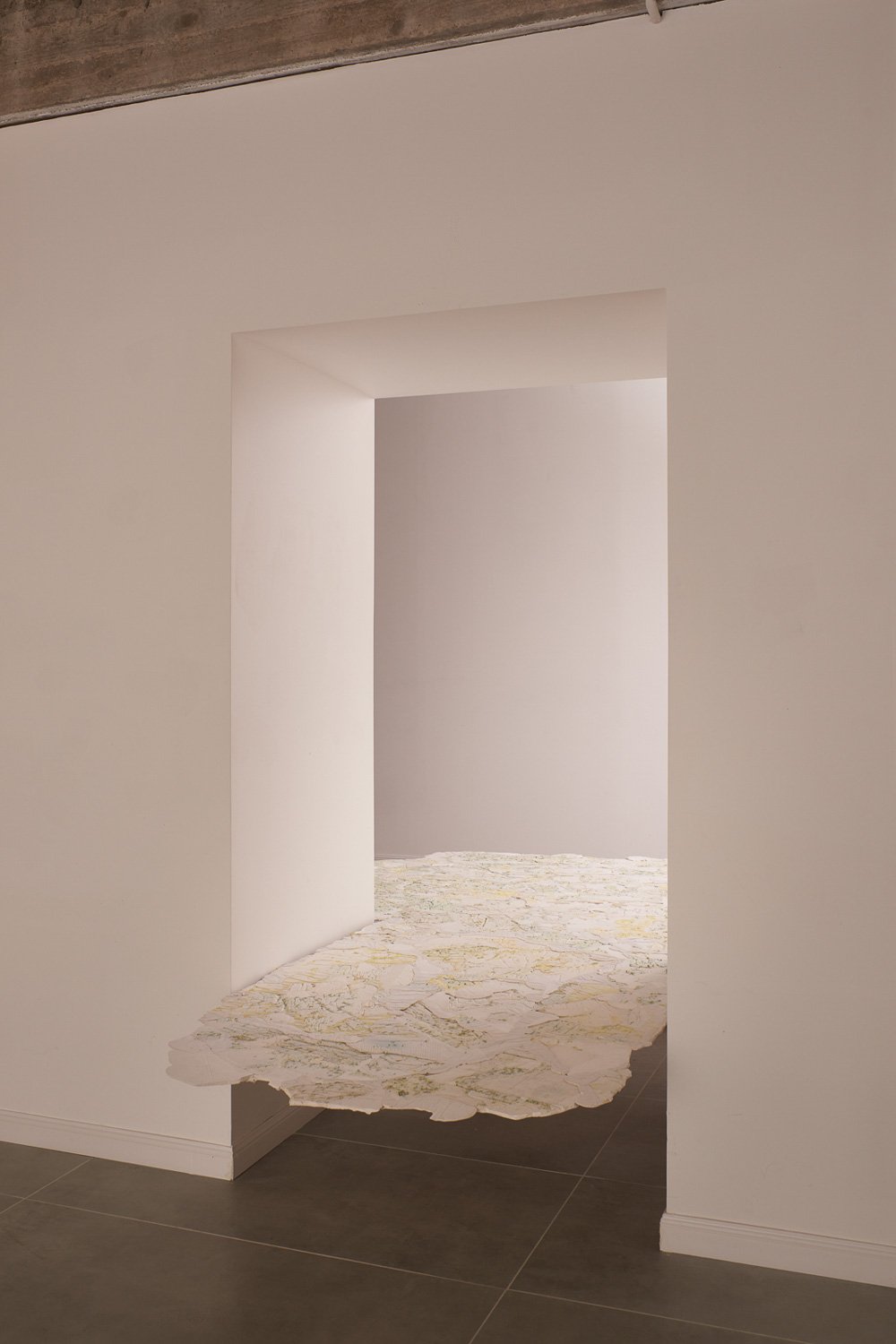
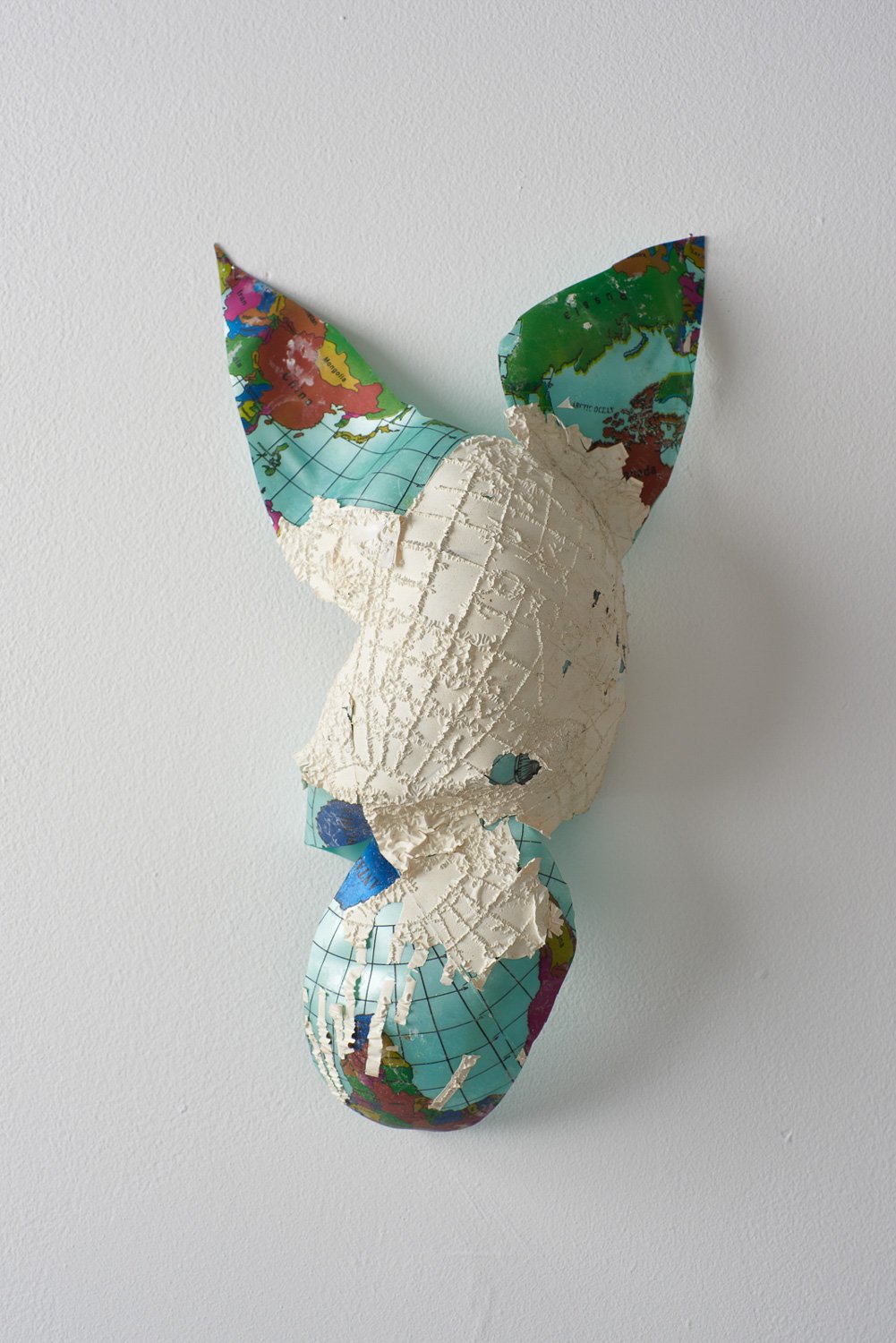
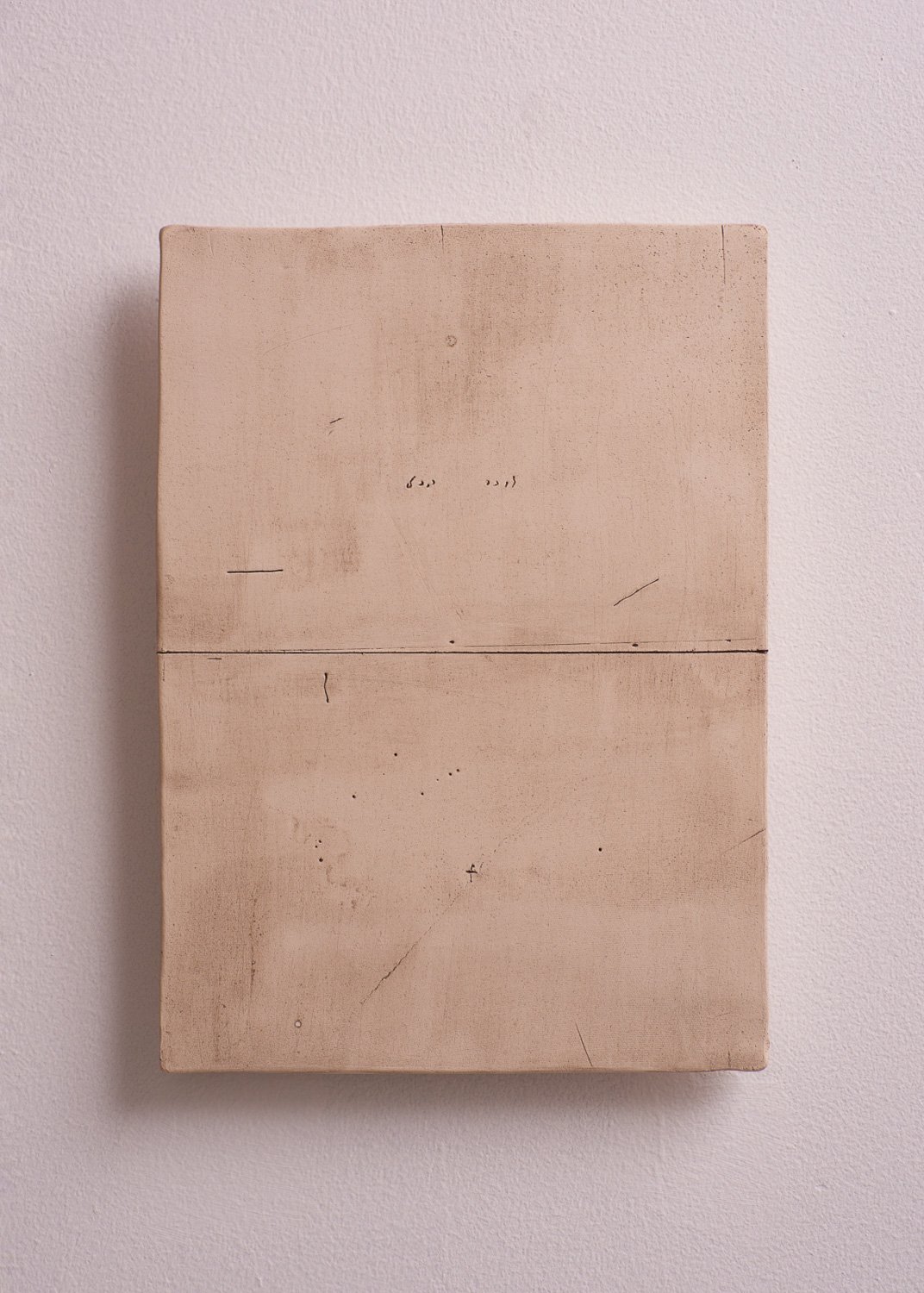
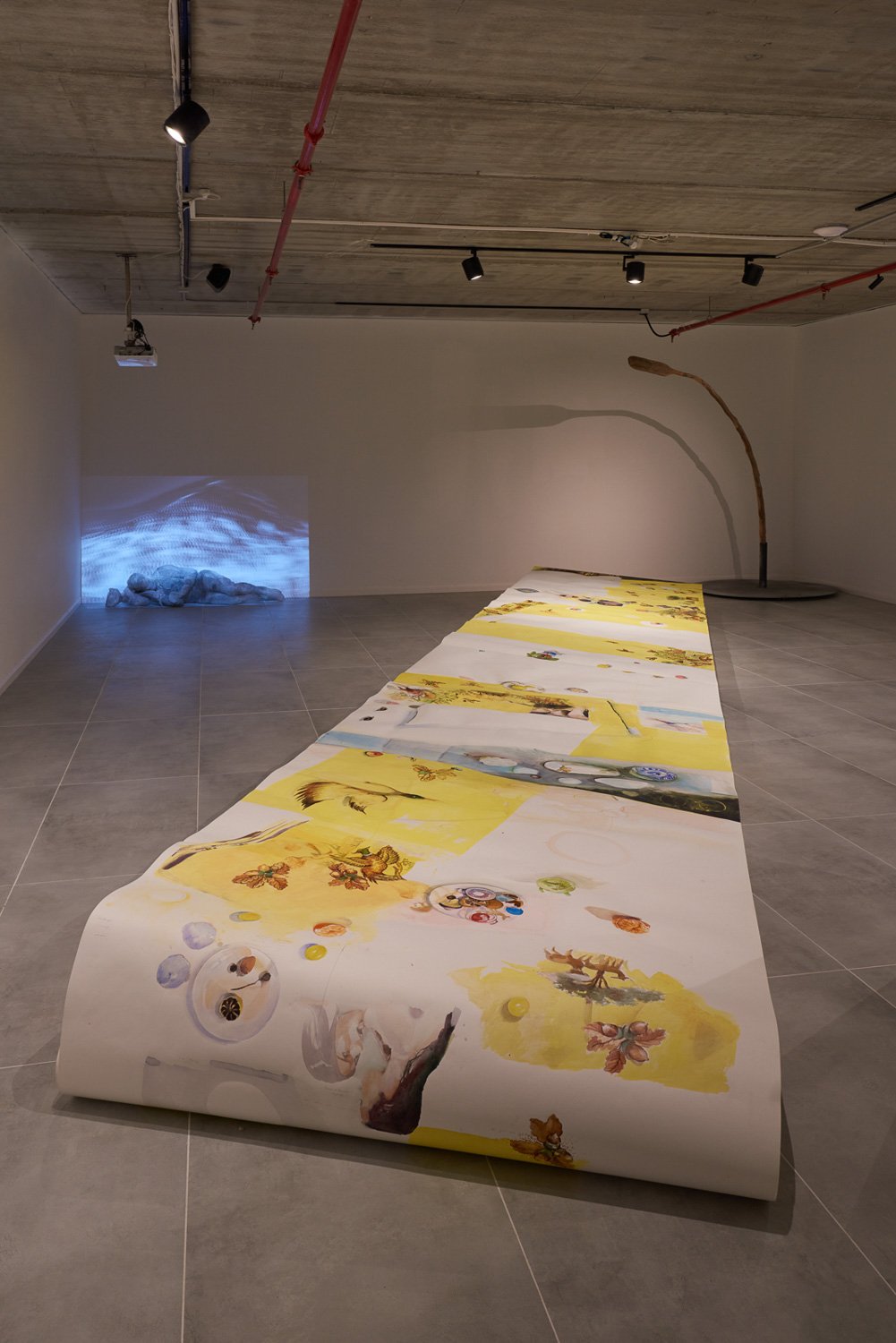
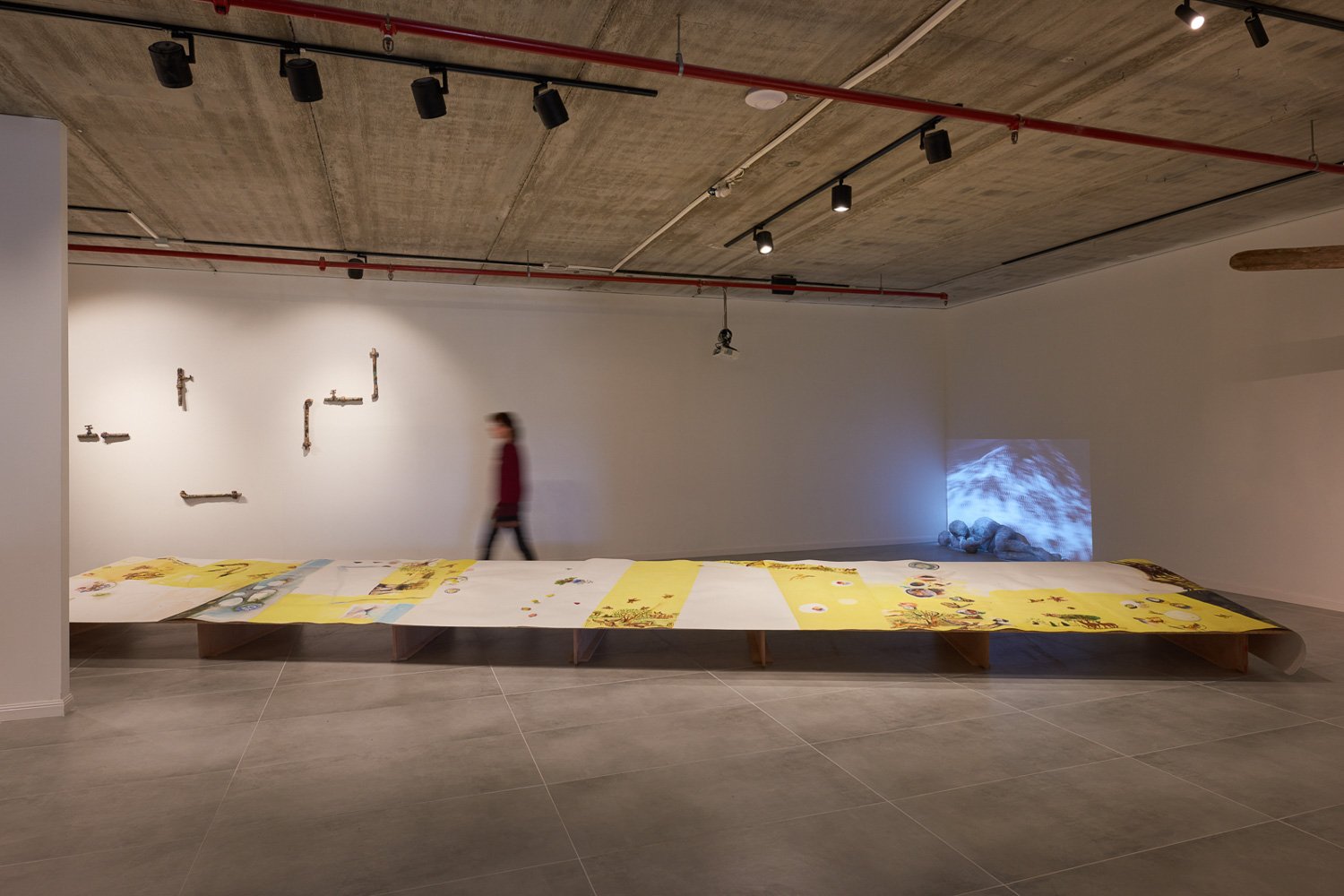
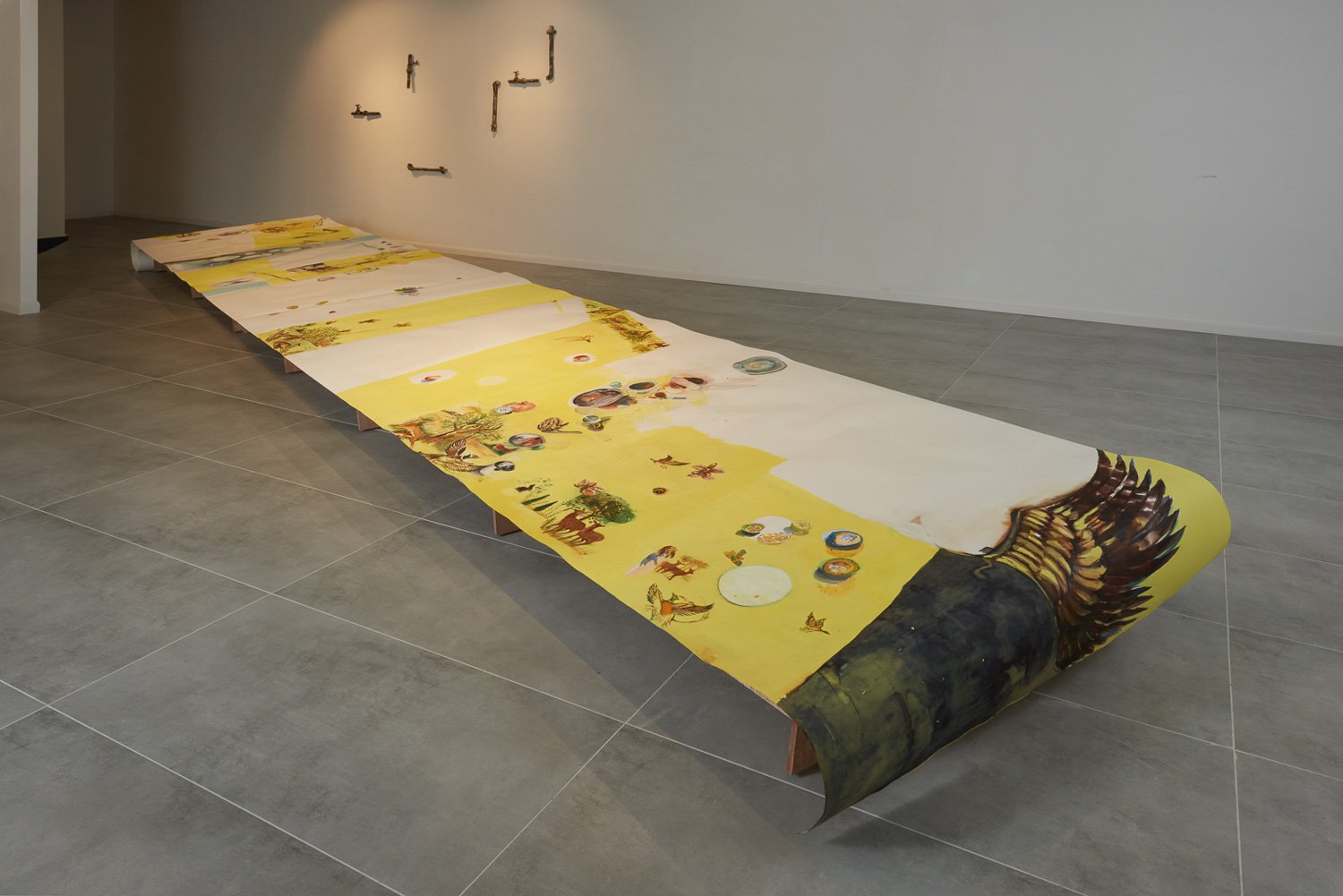
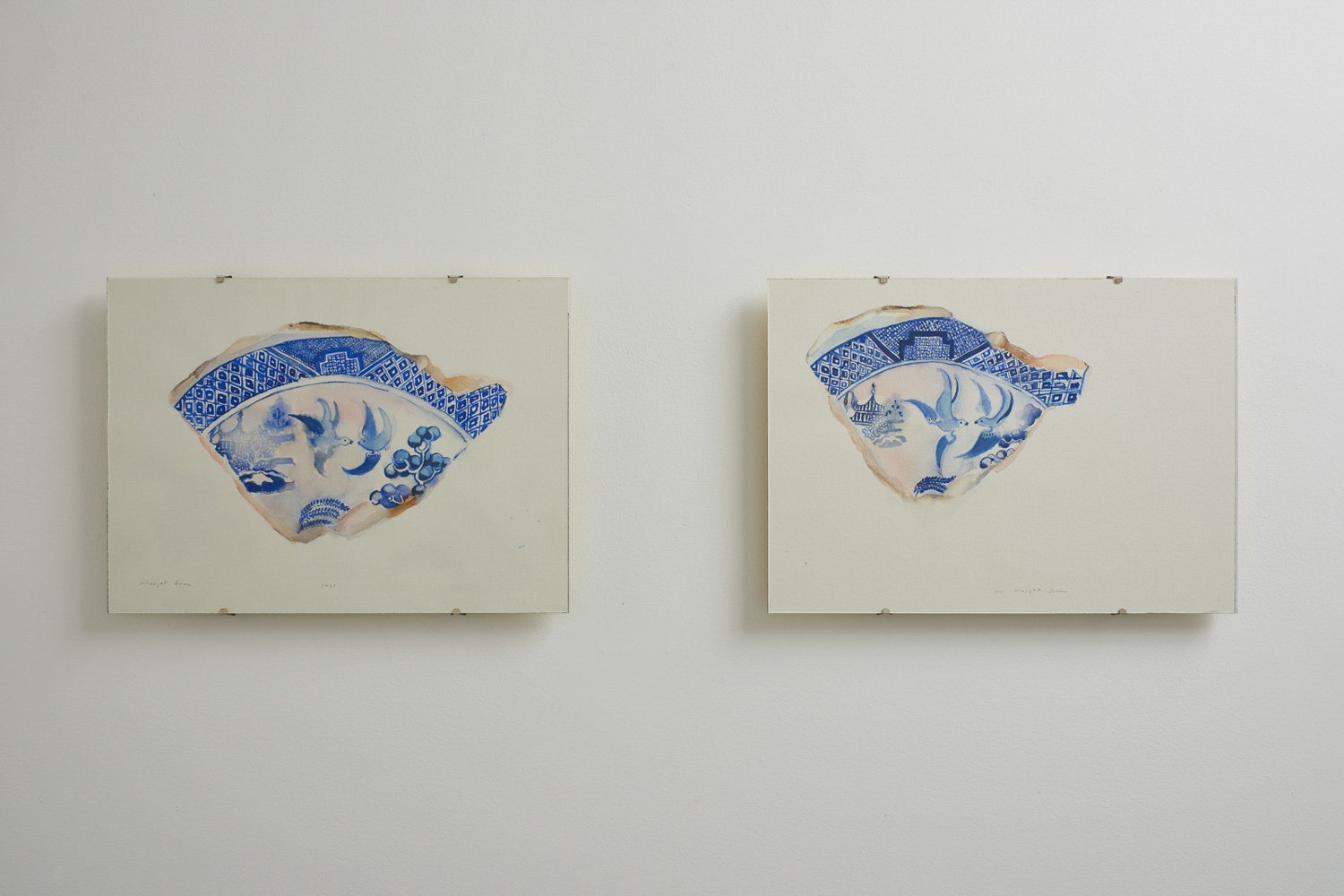
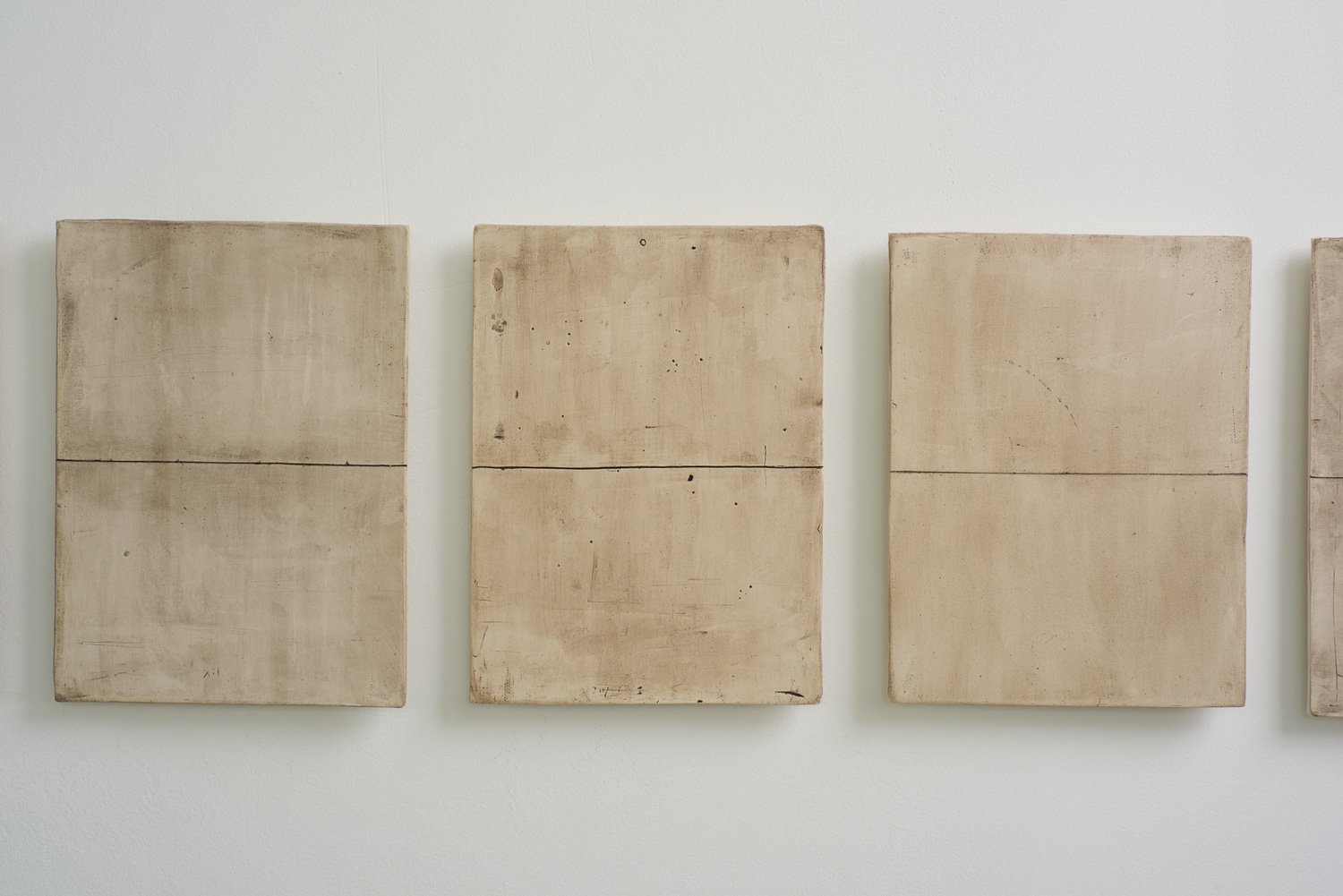
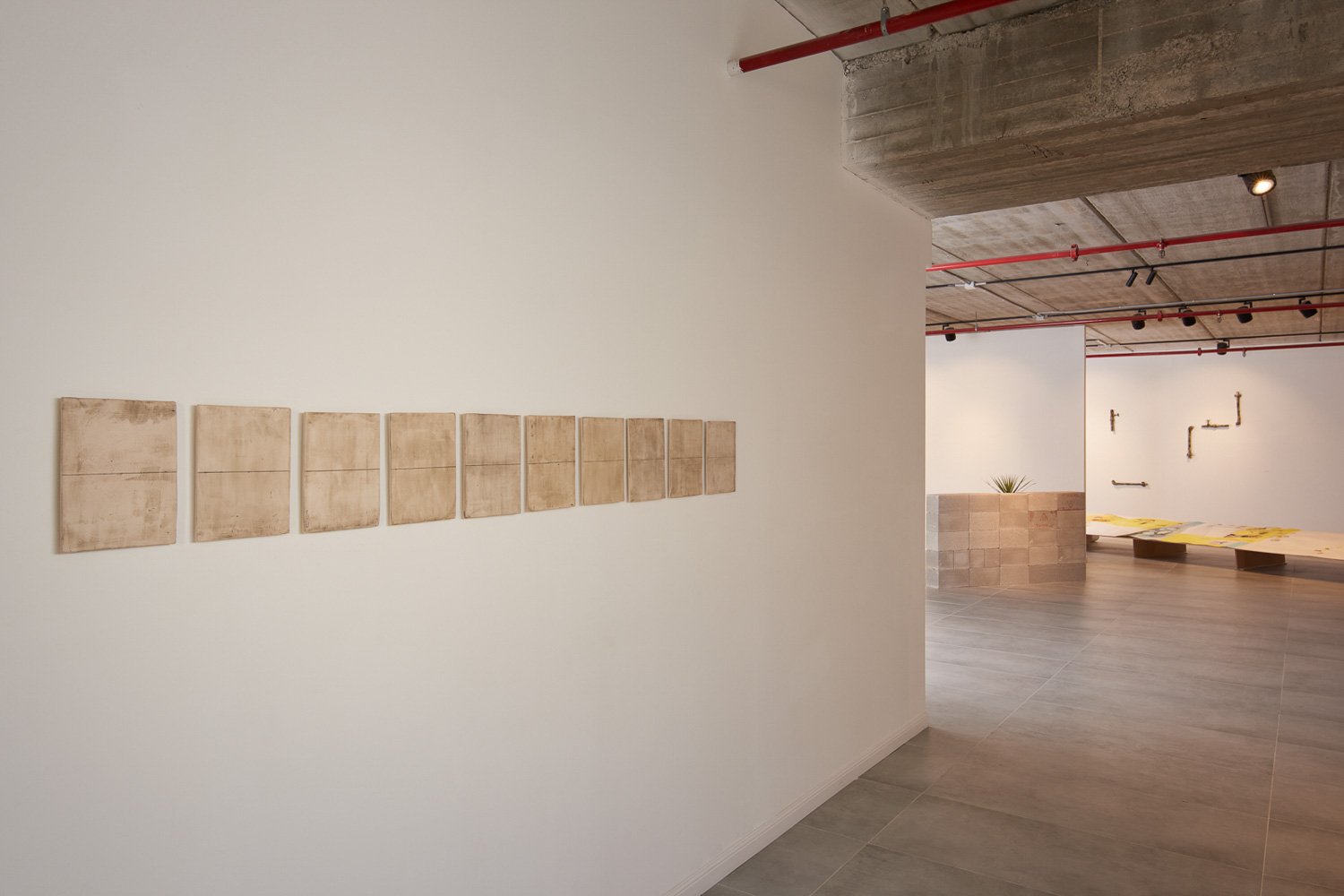
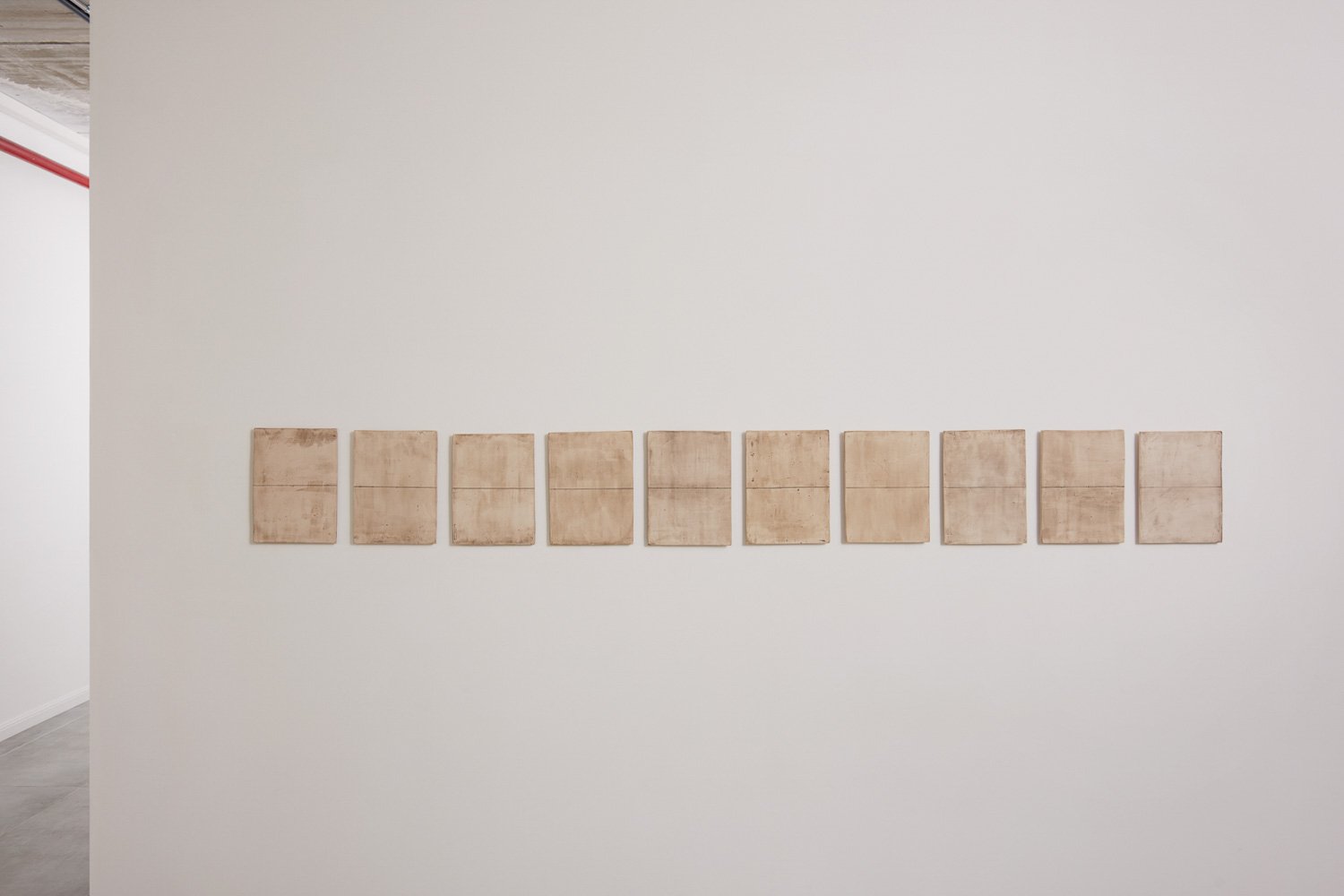
ארבעה כיווני אוויר
מציגים: בלהה אהרוני, מרגו גראן, ינאי קלנר, עמיר רוזנברג
אוצרת: רותי חינסקי אמיתי
העין עוקבת אחר השבילים שהותוו לה בתוך היצירה.[1]
המכנה המשותף הראשון הבולט לעין בעבודותיהם של ארבעת האמנים המציגים בתערוכה נוגע להשפעה הרבה של הטבע והפעולה הטבעית על עולמם הפנימי, כפי שהם משתקפים בדימויים, במילון הצורות, בחומריות, במרקמים ובעמל הכפיים המושקע בהן.
חוויותיהם האישיות מותכות עם עקבות גנאולוגיות קמאיות ומיתיות, שממשיכות להתגלגל כתגובה וכהתייחסות להתרחשויות בזמן הווה. העבודות הן מקטעי סביבות – סינקדוכות[2] של מרחבי המחיה הפנימיים שבתוכם הם פועלים.
החיבורים בין ארבעתם הם בראש ובראשונה תחושתיים ואינטואיטיביים ורק אחר כך אינטלקטואליים. כמו חוטים עדינים ושקופים שנמתחים ואורגים את חילופי המשמעויות בין ובתוך המרחבים הפרומים והלא-יציבים שבהם מהלכים הארבעה לכדי מארג משותף שמזמן בדיקה מתמדת של חיים במציאות טרופה, שבה האישי, החברתי, המדעי, המיסטי, הפוליטי, המקומי והגלובלי מתמזגים זה בזה.
דימויים של מכשירי מדידה ועזרי תצפיות לסוגיהם, השאולים מעולמם של יורדי ים, בנאים, חוקרי טבע ואחרים, שצללי העבר נחרטו בהם, פזורים ברחבי התערוכה כעזרים סימבוליים, בניסיון לפלס דרך בנתיב חתחתים כאוטי ולצפות את הבאות, וגם כהיצע של מבטים רפלקסיביים אל הנוף, אל החברה, אל האמנות, אל חלל התערוכה עצמה ואל קו האופק – שהוא לעולם קו השבר החוסם את המבט אל מה שנעדר.
קווי שבר (אופקיים ואנכיים) מרובים שבים ומתגלים ברחבי התערוכה. באופן מטפורי ניתן לראות כל אחד מהם כאזור סף שמתרחש בו אירוע מתמשך המפגיש את החקר החומרי והפנים-אמנותי עם עולם הנפש, שעקבותיו נחרטו בעבודות כסימנים שמצפינים את הנסתר והמושתק.
העבודות בתערוכה הן אמנם חלק מתהליכי עבודה ממושכים, אך רובן נעשו סמוך להקמת התערוכה ומקצתן אף הושלמו בחלל עצמו בעת ההקמה. לכן, קריאתן בנקודת הזמן העכשווית, שבה מבנים שפעם היו יציבים מתפוררים או נמצאים על סף קריסה, היא רלוונטית. קריאה זו מאפשרת להבחין בפוטנציאל הגלום במדיום ובפעולה האמנותיים להבקיע סדק המאיר על השיבוש שנעלם מהמבט, שנוגע ליחסים בינינו לבין עצמנו ובינינו לבין העולם והיקום; סדק שאפשר שכבר הוטבע בתוכנו, אך עדיין לא חלחל במלואו לתודעתנו.
בלהה אהרוני
ילידת 1951, ישראל. פסלת. מציגה בתערוכות יחיד וקבוצתיות בארץ ובעולם. עבודותיה נמצאות באוספים פרטיים וציבוריים. גרה ועובדת במכמורת.
עבור בלהה אהרוני הים הוא נוכחות פיזית יום-יומית רבת-תהפוכות ומקור למאגר דימויים המתאפיין בצורניות שמנוסחת בתמצות קפדני ובאיפוק. המשוט, מכשירי המדידה והניווט למיניהם, שבים ומופיעים בעבודותיה. השיבושים שאהרוני מחוללת בהם מבטאים את החשש המקנן בה מאובדן דרך אנושי ומוסרי, אישי וקולקטיבי ומאיזון שאולי כבר הופר.
דמות גבר אפורה, מכונסת בתוך עצמה, היא מוטיב פיסולי מרכזי נוסף ביצירתה, המייצג את האדם הפשוט – פרט מ"הרוב הדומם". אהרוני ממקמת אותו במצבי סף פיזיים ותודעתיים ומחלצת מהאנונימיות שלו שבריריות אינטימית. הפעם מיקמה אותו על קו המים, כשהוא מכורבל בתנוחת שינה, והמים ספק מלטפים ספק מאיימים לסחוף אותו.
בעבודת הוידאו מרוקנים את הים, הפעולה הסיזיפית החוזרת על עצמה משולה לפעולת האמנות העמלנית והרפטטיבית המוּנעת מדחף עז, גם כאשר לעיתים היא חסרת תוחלת.
מרגו גראן
ילידת 1967, ארה"ב. אמנית רב-תחומית, עוסקת בציור לצד רישום חרוט בחומר, צילום תיעודי ומיצב. בוגרת המחלקה לאמנות, בצלאל אקדמיה לאמנות ועיצוב ירושלים. זוכת פרס מרי פישר, מלגות קרן שרת, פרס עידוד יצירה ומלגת אמן-מורה. מציגה בתערוכות יחיד וקבוצתיות בארץ ובחו"ל. עבודותיה נמצאות באוספים פרטיים וציבוריים בארץ ובחו"ל. חיה ויוצרת בישראל.
ההשראה לפרויקט המגילה של מרגו גראן, נספח לעשור, הייתה שעוונית צהובה לכיסוי שולחן, שעליה מצויר נוף פסטורלי של אחו. גראן חילצה מהשעוונית, שנמצאת ברשותה שנים רבות, את הדימויים האידיליים וגם את הצבע הצהוב, והוסיפה אליהם דימויים פיגורטיביים ומופשטים מעולמות תוכן ומזמנים אחרים, שמשבשים את הנוף הארקדי הפיקטיבי ומאפשרים להציף את מה שמוסתר מתחת לפני השטח, תוך שימוש בדימוי המפה המכסה.
בסדרת קווי אופק, הקו הנמתח מקצה לקצה חוצה את האריחים כקו אופק מתמשך, שסביבו זרועים סימנים זעירים המאזכרים סימנים בגוף וסימונים על מפות כוכבים המשמשות ספנים לנווט בחושך בלב ים. הסדרה מקפלת בתוכה את זיכרון המסע ארוך השנים של המשפחה מקליפורניה לישראל, בסירת מפרשים שבנה האב. החיים בקרבת איתני הטבע הבלתי צפויים, ללא אדמה יציבה או קבועה, השפיעו במידה רבה על חייה של גראן, והם מהדהדים במאגר הדימויים שלה ובאופן שבו היא בוחנת דברים ומארגנת אותם. הקו הדמיוני שמפגיש בין שמיים למים, שנתפס בילדות כיעד קבוע, מצביע על תנועה חוזרת בעבודותיה – מהקרוב והאינטימי אל המבט למרחקים.
ינאי קלנר
יליד 1986, ישראל. אמן, מורה ומרצה לאמנות, בוגר תואר ראשון בחינוך ואמנות מכללת אורנים, תואר שני באמנות אוניברסיטת חיפה. זוכה פרס אמן צעיר מוזיאון הכט, פרס קרן התרבות אמריקה ישראל, עוסק בחיים דרך חומרים כבדים. חי ועובד בחיפה.
בריקולר הוא בעל מלאכה, מעין מהנדס חובב, המלקט שברי אירועים, זיכרונות וחומרים זמינים מהיום-יום, ודרך צירופים שמקיימים זיקה אל העבר שממנו נלקטו החומרים הוא בונה מחדש את מערכות הסימנים שגררו עימם הפרגמנטים מעברם. האנתרופולוג והסוציולוג קלוד לוי שטראוס רואה בבריקולר מי שעוסק בהבנה מאוחרת של העולם.
כמו הבריקולר, כך גם ינאי קלנר מלקט חומרים שונים ומצרפם לכדי מבנה חשיבה חדש שממוקם במרחב שבין המציאותי למיתי. האובייקטים, העשויים מצירופים של חומרים "נמוכים" ויום-יומיים, הופכים למסמנים של סביבה טרופה, שלא ברור אם ננטשה ונחרבה או התגלתה זה מקרוב ועומדת להצמיח חיים חדשים.
בתערוכה מוצגת גם סדרה של פסלי קרמיקה, שמשחזרים חלקי צינורות אינסטלציה. קלנר מנתק אותם מהממד הפונקציונלי ומהקשרם למקומם הנסתר והופך אותם לחפצי אמנות שמאזכרים את האסתטיקה של וואבי-סאבי, שבה היופי טמון בבר-חלוף ובחוסר השלמות.
עמיר רוזנברג
יליד 1977, חדרה. אמן רב-תחומי, בוגר המחלקה לאמנות רב-תחומית מכללת שנקר, מוסמך אוניברסיטת חיפה. למד אדריכלות במכללת ויצו חיפה. זוכה פרס ע"ש מרגרט וסילבן אדמס לאמן צעיר (2021). מציג בתערוכות בארץ ובחו"ל. חי ועובד בחיפה.
עבודתו של עמיר רוזנברג עשויה מחומרים מתפוררים ומתכלים. רסיסי מידע שנאספים ונוצרים על ידו כרליקוויות קטנות ממדים האוצרות בחיקן שרידים של זיכרון. בפעולה הרפטטיבית הן מצטברות ומתאחות לכדי מסד נתונים מורכב – מקום שהוא אי צף, המפגין את התהליך האבולוציוני של היווצרותו.
מהלך העבודה של רוזנברג הוא אינטואיטיבי ואסוציאטיבי (רק החומרים, הגבס והדפים המשובצים נבחרו מראש), וההתהוות מתרחשת ומתגלה תוך כדי הפעולה, לעיתים באופן לא-צפוי בעקבות פעולה קודמת. מקום חשוב בתהליך העבודה שמור לאירועים בלתי נשלטים ול"תאונות", שמוטבעים בחומר ומעלים על הדעת הצפנה של תהליכים מוסתרים שהשתבשו, שחורצים גורלות והיסטוריות ומסמנים מרחב קיומי מאוחה ופריך, אישי וקולקטיבי.
[1] Paul Klee, Pedagogical Sketchbook, 1972 (1953), Praeger Publishers ,New York, p.33
הציטוט בעקבות: ג'ורג' פרק, החיים הוראות שימוש, 2005, תל אביב: בבל.
[2] חלק המייצג את השלם.
Four Directions of the Wind
Bilha Aharoni, Margot Gran, Yanai Kellner, Amir Rosenberg
Curator: Ruty Chinsky Amitay
“The eye travels along the paths cut out for it in the work.”[1]
The first, clearly visible commonality in the works of the four artists participating in this exhibition is the great impact of nature and acts of nature on their inner worlds. This is reflected in the images, the lexicon of forms, the materiality, the textures and the manual labor invested in their work. Their personal experiences are welded together with genealogical, primordial and mythical traces which continue to surface in reaction to occurrences in the present. The works are segments of environments – a synecdoche[2] of the internal living spaces in which they operate. The links between the four are first and foremost sensory and intuitive, and only later do they become intellectual. They are like subtle, transparent threads that stretch and weave the exchanges of meaning between and within the unraveled and unstable spaces in which the four stride, meshing into a shared fabric. This fabric invites a continuous examination of life in a frenetic reality in which the personal, social, scientific, mystical, political, local and global meld into one.
Images of measuring and observation devices of all kinds, borrowed from the worlds of seafarers, builders, naturalists and others, in whom the shades of the past have been embedded, are dispersed throughout the exhibition as symbolic aids. This is an endeavor to forge a path in a chaotic obstacle course and to predict the future, as well as to provide a supply of reflexive glances at the landscape, society, art, the exhibition space itself and the horizon – which always serves as the dividing line blocking the view from that which is absent.
Multiple dividing lines (horizontal and vertical) reveal themselves over and over again throughout the exhibition. Metaphorically, each of them can be seen as a liminal area where a continuous event occurs, leading to an encounter between art’s study of material and the world of the soul. The traces of this encounter, which have been carved into the works as marks, serve as codes of the hidden and the silenced.
Although the works in the exhibition are part of ongoing working processes, most of them were created right before the exhibition’s installation and some were even completed in the exhibition space during installation. Therefore, reading them at this precise point in time, when structures that were once stable are crumbling or are on the verge of collapse, is relevant. This reading enables viewers to discern the potential inherent in the artistic medium and act, and to forge a crack that illuminates distortion invisible to the eye, with respect to our relationships with ourselves and with the world and universe. This crack may already be embedded within us, but it has not seeped fully into our consciousness.
Bilha Aharoni
Born 1951, Israel. Sculptor. Exhibits in solo and group exhibitions in Israel and abroad. Aharoni’s works are included in private and public collections. She lives and works in Michmoret.
For Bilha Aharoni, the sea has a daily physical presence, replete with upheaval. It is the source for a stock of images characterized by concise, precise and restrained forms. Oars and various types of measuring and navigation devices recur in her works. The distortions Aharoni imposes on them convey the fear nestling within her, of losing a human, moral personal and collective path, and an equilibrium which may have already been violated.
An introverted gray male figure is a central sculptural motif in her oeuvre. It represents the simple person – an individual within the “silent majority”. Aharoni positions this figure in physical and cerebral liminal states and rescues intimate fragility from within the figure’s anonymity. This time, she has positioned it on the water’s edge, curled in a sleeping position, creating ambiguity as to whether the water is caressing the figure or threatening to wash it away.
In the video work, “Bucket after Bucket”, the repetitive, Sisyphean task serves as a metaphor for the repetitive, labor-intensive artistic act, which is motivated by a fierce impulse even when it can appear hopeless at times.
Margot Gran
Born 1967, USA. Multi-disciplinary artist, works in painting as well as drawing carved in clay, documentary photography and installation. Graduate of the Department of Fine Arts, Bezalel Academy of Art and Design, Jerusalem. She is the recipient of the Mary Fisher Award, the Sharett Grants, the Ministry of Culture’s Creative Encouragement Award and the Artist-Teacher Grant. She exhibits in solo and group exhibitions in Israel and abroad. Gran’s works are included in private and public collections in Israel and abroad. She lives and works in Israel.
The inspiration for Margot Gran’s scroll project, titled “Footnotes of a decade”, was a yellow oilcloth for the table, on which a pastoral meadow landscape had been painted. Gran extracted from the oilcloth, which has been in her possession for many years, the idyllic images as well as the yellow color, and added figurative and abstract images from other worlds and times, which distort the Arcadian, fictive landscape and enable that which has been buried below to rise to the surface. This is achieved through the use of the image of the tablecloth, which serves as a cover.
In the “Horizon Lines” series, the line which extends from end to end traverses the tiles like a continuous horizon line, around which tiny signs have been planted. These symbols allude to corporeal marks and marks from the star charts used by sailors to navigate in the heart of the sea in darkness. The series enfolds the memory of the artist’s family’s years-long journey from California to Israel in a sailboat built by her father. Life among the unpredictable forces of nature, with no permanent or stable ground, had a strong impact on Margot’s life, and this is echoed in her stock of images and the manner in which she examines and organizes things. The imaginary line of the firmament between the sky and the waters, which during her childhood was perceived as a permanent destination, points to a recurring movement in her work – from the close and intimate to a view of the expanses.
Yanai Kellner
Born 1986, Israel. Artist, teacher and lecturer on art. Holds a B.Ed. degree in Education and Art from the Oranim Academic College of Education and an MFA from University of Haifa. Recipient of the Hecht Museum Young Artist Award and the America-Israel Cultural Foundation Award. Kellner engages with life through heavy materials. He lives and works in Haifa.
A “bricoleur” is a craftsman, a kind of amateur engineer, who collects shards of events, memories and readily available everyday materials. Through combinations that uphold a tie to the past from which the materials were gathered, the bricoleur reconstructs the symbolism the fragments carry with them from their past. Anthropologist and sociologist Claude Lévi Strauss viewed the bricoleur as a person engaged in a late understanding of the world.
Like a bricoleur, Yanai Kellner gathers different materials and connects them into a new structure of thinking, located in the space between reality and myth. The objects, composed of combinations of quotidian “low-brow” materials, are transformed into signifiers of a frenetic environment. It is unclear whether this environment has been deserted and destroyed or has just been discovered and is about to blossom new life.
In the exhibition, a series of ceramic sculptures is also exhibited. These sculptures reconstruct parts of plumbing pipes. Kellner removes them from their functional dimension and context in a hidden place, and transforms them into objects of art which recall the wabi-sabi aesthetic, in which beauty can be found in the ephemeral and in imperfection.
Amir Rosenberg
Born 1977, Hadera. Multi-disciplinary artist, holds a BFA from the Shenkar Multidisciplinary Art School and a master’s degree from University of Haifa. Rosenberg studied architecture at the WIZO Haifa School of Design. He is the recipient of the Margaret and Sylvan Adams Young Artist Award (2021). He exhibits in exhibitions in Israel and abroad. Rosenberg lives and works in Haifa.
Amir Rosenberg’s work is composed of crumbling, eroding materials. He collects and creates shards of information as small-scale reliquaries which store remnants of memory. In a repetitive action, they accumulate and mesh into a complex database – a place that is a floating island, which demonstrates the evolutionary process of its creation.
Rosenberg’s working process is intuitive and associative (only the materials, the plaster and the papers are selected in advance), and the work comes into being and reveals itself during the act, sometimes in an unexpected manner as a result of a previous act. Events stemming from a lack of control and “accidents” have an important place in the working process. These are embedded in the material and elicit thoughts of encoding of concealed processes that have gone wrong, which determine historical destinies and mark an existential space that is joined and fragile as well as personal and collective.
[1] Paul Klee, Pedagogical Sketchbook, 1972 (1953), Praeger Publishers, New York, p.33
This quotation served as the epigraph of the preamble of Georges Perec’s book: Life A User’s Manual.
Accessed from: https://www.ias.edu/ideas/paul-klee’s-angelus-novus
[2] A part that represents a whole.
